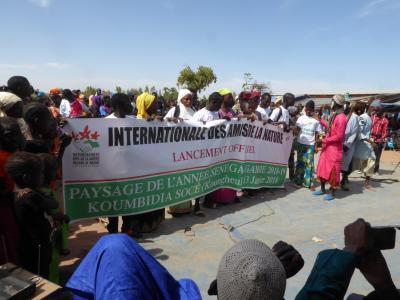
Landscape of the Year Senegal/The Gambia
The Landscape of the Year Senegal/The Gambia is the first Landscape of the Year on the African continent and thus assumes a special position. As a pilot project of the Naturefriends movement, it aims to illustrate how international solidarity can be put into practice in specific activities in the region and thus be sustainably established.
The selected region lies on the edge of the Sahel zone and is already marked by the consequences of climate change. This is why climate justice plays a vital part in the activities. Accompanying activities in Europe aim at a broad involvement of European Naturefriends. Furthermore, Naturefriends journeys to the region intend to enable personal encounters and intensive exchange as well as foster gentle tourism in the region, which constitutes an important source of income for the local population.
Following the successful political changes in The Gambia, this country is currently experiencing an atmosphere of renewal which is the perfect precondition for cross-border cooperation in the border area of the two countries and for the activities within the Landscape of the Year. The locals naturally hope to welcome many European guests to their home over the next years!
LANDSCAPE OF THE YEAR 2018/2020 – SENEGAL/THE GAMBIA NEWS (34)
Virtual trip to Senegal and the Gambia – a review
Getting to know other countries and cultures and sharing experiences, making friends, forgetting one's everyday life for a few days and being open to new ideas. This is the focus of the international Naturefriends trips, which have been organised for many years in cooperation with Naturefriends in Senegal, the Gambia and Togo, and which set impulses for sustainable tourism development in the travel countries.
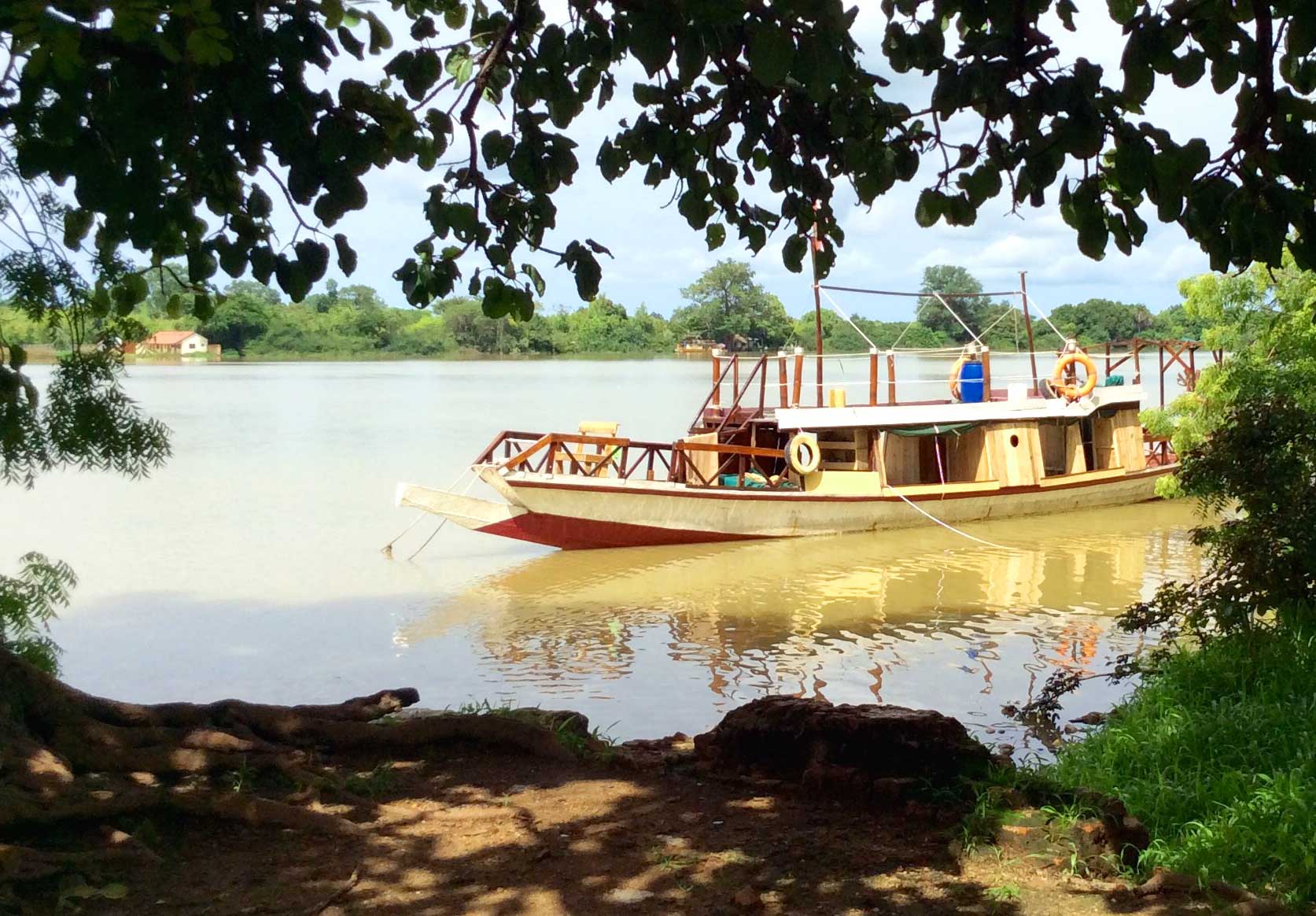
Getting to know other countries and cultures and sharing experiences, making friends, forgetting one's everyday life for a few days and being open to new ideas. This is the focus of the international Naturefriends trips, which have been organised for many years in cooperation with Naturefriends in Senegal, the Gambia and Togo, and which set impulses for sustainable tourism development in the travel countries.
Due to Corona, this year this was not possible in the usual form – like so many other things. So, we rethought our travels and implemented a visit to the Landscape of the Year in the border region of Senegal and the Gambia in virtual form – according to the motto: The real adventures are in your mind.
This was not a fully adequate substitute for a real trip, but it was an opportunity to get to know the two countries and to gain an insight into their culture, all without the need for climate-impacting flights. 113 people travelled together virtually from 20 January to 3 February 2021 – informed about the current stage of the journey by our daily travel newsletter and in exchange with each other and with our African partners via our tourism_LOG. And many other interested people followed the journey via social media.
An exciting topic that was addressed several times during the trip was the situation of women in the region. For example, a visit to the "Women's Initiative the Gambia" in Njaw, which sets initiatives for sustainable development, or to the "Women of Kamb", a Senegalese village in the "Forest of Mbao", where 22 committed women produce fruit and vegetables for the local market, was on the agenda.
Our tour guide Ingeborg Pint speaks for many of the participants with her contribution to the online discussion: "Nice to see these strong women again! And good that Naturefriends in Senegal and the Gambia are consistently committed to encouraging and supporting women – through concrete projects, through initiatives in educational institutions, through visits with Naturefriends groups that give the women (but also the men) a feeling of appreciation and of meeting at eye level."
Mamadou Mbodji, who coordinates and accompanies the Naturefriends trips to the region on site, provides information about projects for and with women, such as a workshop on the production of improved, energy-efficient cooking stoves, which also are an important contribution to climate protection.
Women also play an important role in the fruit tree plantations that Naturefriends Senegal have been implementing in the Landscape of the Year together with the local population since 2018 with donations from the Naturefriends Climate Fund. It´s mainly the women who take care of the trees and later also harvest the fruits, as healthy food for their families, but also as a possibility to generate their own income by selling them. This way, they are strengthened in their importance for the families and the village community.
At the end of the trip, many positive voices and words of thanks reached us. One participant wrote: "Thank you for this wonderful trip! It would certainly have been even more beautiful in real form, but also much more strenuous. Nevertheless, I would like to do it as soon as it will be possible to travel again."
Several participants have already participated on previous trips to the region. One of them writes in our blog: "At the end of 2018, I had the opportunity to participate in real terms in the trip to Senegal and the Gambia. Many memories have come back, especially memories of the great people we had the chance to meet. ... Let's hope that European and African Naturefriends can meet again in the near future!"
We are pleased that we received so much support for our initiative and that we were able to share positive images in the current difficult times – as one of the participants also put it: "Thank you very much for the effort that went into creating this travel report. It was a ray of hope every morning in these dark times."
Despite all the beautiful impressions, the great poverty in the region is unfortunately also a very present topic: the rural population lives mostly from agriculture, but this is becoming increasingly difficult due to the consequences of climate change, such as crop failures because of droughts or also the advancing erosion of the soil. In addition, there is now also the Corona crisis, which is leading to an increase in poverty. One of the travellers sums it up like this: "In the joy about this beautiful, informative report, the thought of how great the economic, health and psychosocial damage there may be and will still be worries me. ... The urgently needed international solidarity to overcome the pandemic is in the end also a protection for us – but perhaps that is too complicated for many people."
The fact that solidarity is possible, at least in small steps, is shown by many participants, some of whom donated very generous amounts for fruit tree plantations in the region they travelled through as a thank you for the virtual trip. The trees will be handed over to the care of families who will be able to harvest the fruit in a few years. In addition, the trees strengthen the soil and contribute to climate protection. In this way, we can contribute to improving the living situation and give our African friends a small ray of hope in these difficult times, too.
In addition to the tree planting, several other Naturefriends activities are planned for the region in the future, such as a joint environmental education project for pupils from Senegal and the Gambia and – once the Corona pandemic will be overcome – international Naturefriends trips, which we are particularly looking forward to!
More about the Landscape of the Year Senegal and Gambia: www.nf-int.org/en/themen/landscape-year/aktivitaeten/landscape-year-senegalthe-gambia-2018-2020
The individual stages of the trip can be read in our tourism_LOG.
Donations for fruit tree plantations are still welcome! They will be processed via the Naturefriends Climate Fund with 100 % of the money transferred to concrete projects implemented by African Naturefriends organisations, that mitigate the consequences of climate change and contribute to more climate justice.
Information on how to donate: www.climatefund.nf-int.org/en/content/my-contribution
LANDSCAPE OF THE YEAR 2018/2020 – SENEGAL/THE GAMBIA NEWS (33)
Covid-19 and solidarity
by MAMADOU MBODJI / Vice-President Naturefriends International, President African Naturefriends Network , Deputy General Secretary Association Sénégalaise des Amis de la Nature (ASAN)
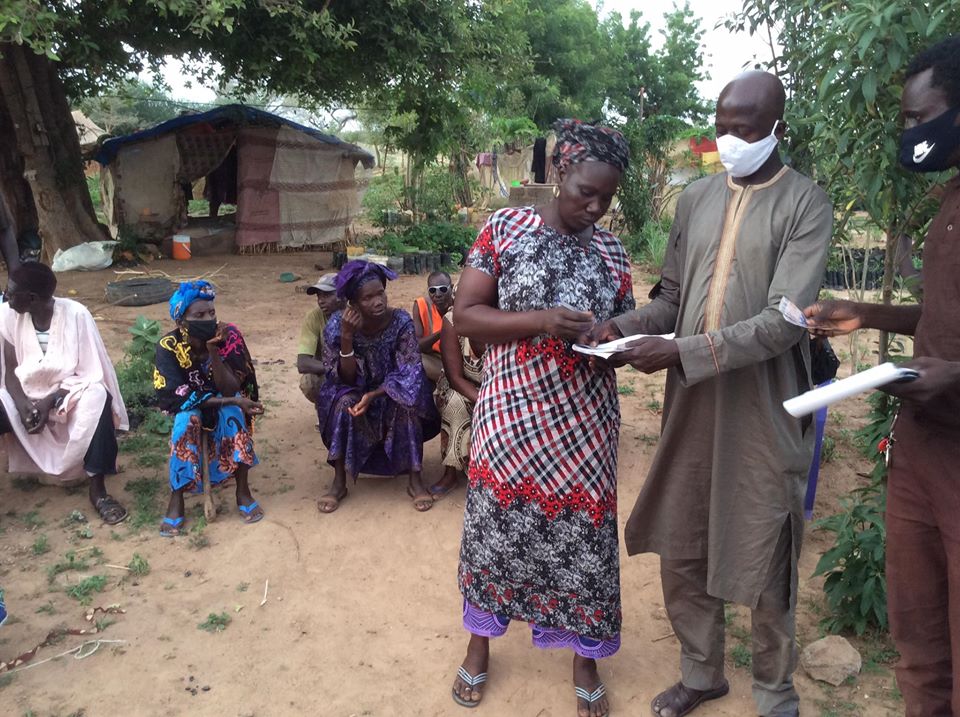
The socio-economic foundations of the people living in the Landscape of the Year were severely shaken by the Covid-19 pandemic. Restrictions on mobility led to the collapse of an economy based mainly on the informal sector, i.e. on day-to-day business. Farmers' incomes fell to zero and grain stocks were dramatically reduced. The lack of essential goods has led to growing food insecurity, with the risk of acute malnutrition among children.
Tourism is also affected because the closure of all accommodation facilities has led to unemployment also in the sectors dependent on tourism. Livestock farming pays a particularly high price, as nomadic grazing (from region to region) was prohibited and fodder was lacking locally.
In short, all sectors of the economic and social life of the population already affected by the climate crisis will now be further weakened by the effects of the corona pandemic.
Against the backdrop of this unprecedented health crisis, German Naturefriends have launched a solidarity campaign of great importance, which will help to strengthen the resilience of endangered communities. Thanks to the donations of the couple Christine and Johannes Borst-Rachor from Offenbach am Main and Philipp Fuge from Berlin, around 3,500 Euros were distributed to five villages in the Landscape of the Year region: Koungheul Socé, Koumbidia Socé and Maka Gouye (Senegal) as well as Njau and Janjanbureh (The Gambia).
Since not every single villager could be provided with the amount, we decided together with our local representatives to give priority to the most vulnerable people who have accompanied and supported the activities initiated and carried out in the framework of the "Landscape of the Year" in the past three years. More than a hundred people have thus benefited from this aid during this period of drought, which is so severe for rural areas. This symbolic gesture thus gives the population some breathing space in the crisis.
This action, which has come at a crucial moment, must also be seen in the context of a permanent dialogue between peoples based on international solidarity. In any case, this gesture, made by people over great distances, is a clear demonstration of the strong bonds that unite Naturefriends from the North and the South.
The recipients of the donations commemorate with great gratitude all those whose actions also strengthen peaceful coexistence through solidarity between peoples. Their thanks also go to Naturefriends International as initiator of the Landscape of the Year, which was invaluable for the participating villages and their habitat. Convinced of the ideals that inspired its foundation 125 years ago, Naturefriends International will never deviate from its goal of working hand in hand for a solidary international understanding.
Berg frei! Kellé!
LANDSCAPE OF THE YEAR 2018/2020 – SENEGAL/THE GAMBIA NEWS (32)
Journey to the Landscape of the Year Senegal / Gambia from 14 to 29 January 2020
Report from Hildegard and Johannes Müllerschön (Naturefriends Heilbronner Land, Germany)
This journey has touched us deeply, especially through the encounters with the people, their openness and cordiality as well as the feeling of solidarity among Naturefriends in Africa and Europe.
LANDSCAPE OF THE YEAR 2018/2020 – SENEGAL/THE GAMBIA NEWS (31)
Two years of Landscape of the Year Senegal/The Gambia – success stories to celebrate!
Personal impressions of Claudia Lenius, Director of NaturFreunde Frankfurt/Main
Janjanbureh (The Gambia), 19 January 2020
It is Sunday lunchtime and hot for European sensibilities. We sit on the Governor's Square under a tent roof and wait for the beginning of the festive event for the "Landscape of the Year 2018-2020", which is also the kick-off for the anniversary year "125 Years Naturefriends Movement".
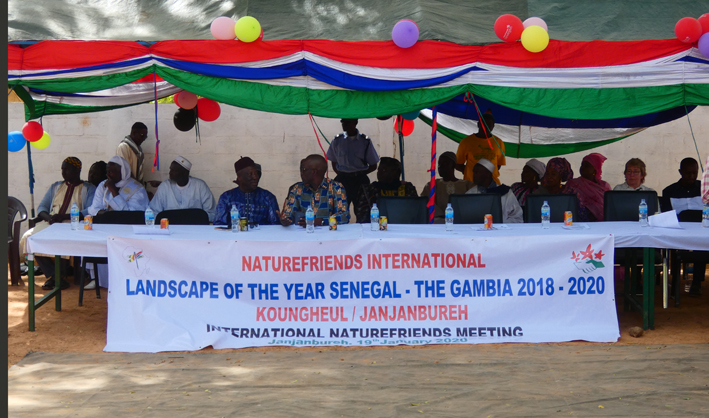
Naturefriends from France, Switzerland, the Netherlands, Germany and Austria have come to Senegambia. Of course, our African Naturefriends, who have promoted the activities for the "Landscape of the Year" on site, are also gathered at the festival site. First and foremost, Mamadou Mbodji, NFI Vice-President, President of the African Network of Naturefriends and Deputy Secretary General of the Senegalese Naturefriends organisation ASAN. Also present were the Naturefriends group from Koungheul (Senegal) and the new NFI member "Just Act" from Janjanbureh, represented by Omar Jammeh and Isatou Foon, as well as the students of the local school.
With a measured step the governor of the central region of The Gambia comes to the fairground and the ceremony begins! After a short welcome by the chief of protocol we hear the Gambian national anthem.
First, Omar Jammeh from "Just Act" gives a speech in which he addresses the great importance of the "Landscape of the Year" for the region. He refers in particular to the successful exchange of young people from Kongheul (Senegal) and Janjanbureh (The Gambia), who have each travelled to the neighbouring country for a long weekend. Although the two cities are only about 40 km apart, it was the first visit to the neighbouring country for all young people and thus an important contribution to international understanding. This exchange was made possible by the support of the Naturefriends Offenbach (Germany), who had collected donations for it. Furthermore, Omar points out that in the afternoon there will be an introduction to the construction of simple, energy-saving cooking stoves made of clay. Fatim Saoulomou, a Guinean Naturefriend, will lead the workshop for 20 local women. (See also article below.)
The event has been combined with the old, cultural Gambian tradition of the Kankurang Festival - thus dances from this tradition ensure a lively, original African tradition. A Kankurang is a medicine man or forest spirit who used to lead the boys intended for circumcision into the forest and protected them during the ritual time until they returned to their village. This ceremony is accompanied by masked and disguised dancers with wild rhythms, accompanied by monotonous drums and whistles. The audience is invited to dance along. Several times the speeches are interrupted by such Kankurang performances.
Afterwards the French Naturefriend Arlette Orry delivers a greeting message from the French Naturefriends President Christine Schmitt and a book present for the students of the local school.
Mamadou Mbodji emphasizes that the celebration of the "Landscape of the Year" represents another milestone in the cooperation between the two countries.
After honouring Ingeborg Pint, the long-time organiser of the Naturefriends trips to Africa, NFI Vice President Petra Müller goes briefly into the origins of the Naturefriends movement. She sees the future of the movement - with reference to the catastrophes of the two World Wars and the ban on Austrian and German Naturefriends during the Nazi era - in the commitment to peace, in international understanding and in the united fight for global climate justice, in addition to the traditional Naturefriends themes of sport, education and culture.
The colourful and noisy event ends with music, dance and a meal together. A successful prelude to the festive year of the 125th anniversary of the Naturefriends movement and a moving tribute to the commitment of the Naturefriends on the African continent!
Claudia Lenius recorded the most important and moving moments of the event in a video (English and French subtitles can be displayed!). Watch the video
LANDSCAPE OF THE YEAR 2018/2020 – SENEGAL/THE GAMBIA NEWS (30)
The climate fund is setting an example
In 2019, the Naturefriends Climate Fund supported the construction of improved, wood-saving and low-smoking cooking stoves in Guinea - as a contribution to climate protection and the promotion of women's health. This project has now set a precedent: As part of the festive event in the Landscape of the Year Senegal/The Gambia, a trainer from Guinea hosted a workshop on building improved cooking facilities for women from the Landscape of the Year.
Arlette Orry (Naturefriends France) was attending this workshop, here is her report:
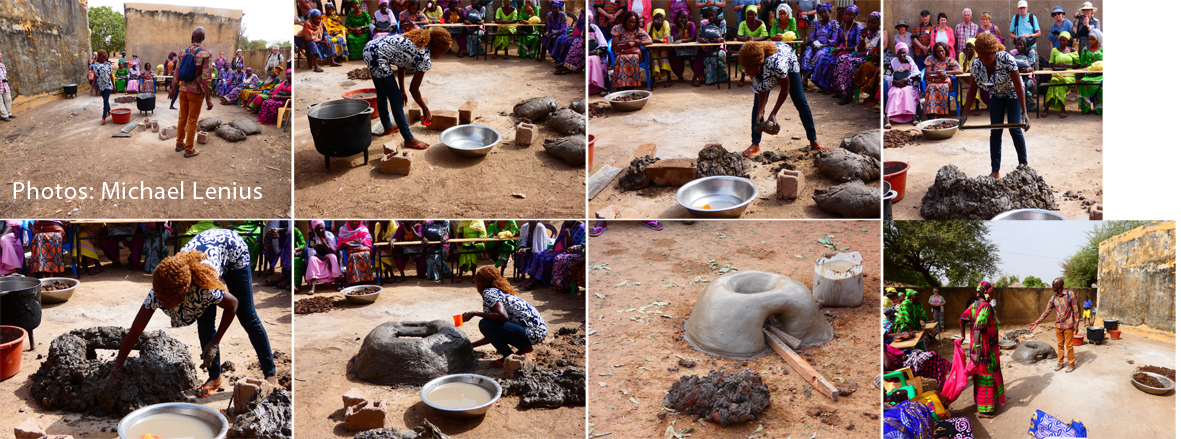
In Koumbidja Socé, where the Landscape of the Year was inaugurated in 2018, 20 women from the region attended an "improved traditional oven" workshop at the Primary School. The aim is to consume less wood and protect women's health with less smoke in the lungs and eyes.
Led by Fatim Saoulomou, a young woman who came from Guinea to pass on the knowledge she inherited from her mother, the women are very attentive: three slightly dampened bricks, placed in a triangle (adapting them to the pot which is used to cook for the pupils) connected by clay prepared in advance ; a small piece of sheet metal, which is laid across two bricks, forms the base of the oven.
Finally, you have to cover, seal the outside and inside with earth and smooth everything by hand to obtain a nice balanced round. All that's left to do is to cover it with well hydrated cow dung to avoid cracks. Some women who cook in their houses think about putting baobab leaves instead, others talk about putting a grate for the charcoal ... creative ideas are born.
Once dried, this oven is used for at least nine to ten months, consuming little firewood, women no longer need to go every day to fetch wood – so cooking is less fatigue and they can spend more time with their children. In addition, cooking produces much less smoke harmful to the lungs and the forests are protected from massive deforestation.
The participants build a smaller stove (for a family pot) in pairs and correct each other when mistakes are made, the atmosphere is good. They would also like to show the women in their families and their villages how to build these stoves.
A morning packed with practical information comes to an end, which we spent with women who want to improve and facilitate their everyday life and at the same time protect their environment.
(January 2020)
LANDSCAPE OF THE YEAR 2018/2020 – SENEGAL/THE GAMBIA NEWS (29)
Naturefriends in Koungheul and their work
In the Senegalese part of the Landscape of the Year 2018–2020 Senegal/The Gambia, the Naturefriends of Koungheul play an important role as organizers, guides and interlocutors in many areas. Their president is Cheikh A.K. Diakhaté, a teacher at Koumbidja Socé College, where the launch of the Landscape of the Year took place. In the interview with NFI, he talks about the work of Naturefriends and the successes of the Landscape of the Year.
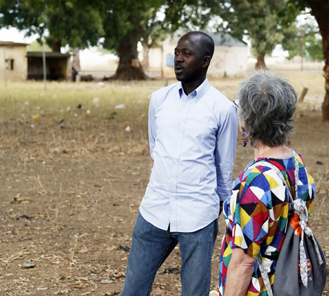
Cheikh, you have been associated with the Naturefriens Koungheul for a long time – as president of the Koungheul section since 2011 and president of the Koungheul Commune local group since 2010. How many Naturefriends are there in Koungheul and its surroundings?
The Koungheul Departmental Section now has more than 385 members, including 200 in Koungheul Commune, 60 in Koungheul Socé, 70 in Koumbidia Socé, 15 in Saly Escale and 40 in Maka Gouye.
Is it correct that members are mainly young people in schools?
Yes, members are mainly young people, students and non-students. We organize sharing meetings with them and encourage schools to set up Naturefriends groups to better awaken young children in the field of environmental education.
Do the students stay Naturefriends, once their schooling is finished?
Yes, if they wish, they can also remain members beyond their school or university time.
What are your main activities?
Our activities revolve around reforestation during the rainy season and especially during the National Tree Day; the sensitization of young people; the assistance of volunteers to set up formal structures for the protection of nature; the installation and the supervision of Naturefriends groups in the Collèges (middle schools) of the Commune; the demultiplication of the acquired knowledge ...
As an organisation active in the field of nature and environmental protection you also participate in local radio broadcasts. How do you benefit from this?
There is a partnership relationship between Naturefriends and the local radio. It enables us to facilitate certain programmes to raise awareness among the population.
During the Landscape of the Year trees were planted in four villages. How is it ensured that these trees thrive?
Together with the contact persons in the villages, the board of Naturefriends Senegal ensures that the plants are looked after professionally and continuously.
Students from Koumbidja participated in the youth twinning with Janjanbureh; what was their feedback? Is contact maintained?
Their feedback was really positive and promising and they were all, Gambians and Senegalese alike, enthusiastic about having made this twinning. Contacts are still being maintained, albeit timidly, despite the distance.
Can you say that the Landscape of the Year, apart from the planted trees, will have some other lasting effects?
Introducing young people to ecotourism guiding has allowed us to positively reconsider our local riches for a sustainable development. And this is one of the effects of the project.
Since the launch of the Landscape of the Year several groups of European Naturefriends have come to visit the region. NFI regularly reports on them in its Newsletter. Do Koungheul Naturefriends / authorities see any prospects beyond the duration of the Landscape of the Year?
Koungheul Commune and the County Council consider the Koungheul Naturefriends as privileged partners in the field of environmental protection (reforestation, creation of a municipal nursery in Koungheul, processing of local agricultural products etc.). Protecting intact nature and creating sources of income for the local population are the basis for sustainable, community-based tourism.
We hiked with the groups several times on the "nature trail" in Maka Gouye. Is this trail also promoted?
This path remains as it was. In any case, I talk about it every time I have the opportunity to meet with the authorities, to encourage local tourism. But there is no organized promotion that I know of ...
(Koungheul, december 2019)
A few figures
Koungheul Department: about 195,710 inhabitants; Koungheul is the capital of the Department of the same name, in the Kaffrine Region which has four Departments : Koungheul, Kaffrine, Malem Hodar and Birilane.
Schools in the department: 138 public and 1 private elementary schools; 9 public and 2 private « Collèges » and 5 Kindergardens
Number of pupils: 17,257 pupils in elementary school in the department, 4,289 in the « Collèges »
Teachers: 654 (insufficient number of teachers)
Main problems of the region: bush fires, deforestation, food insecurity, low school enrolment of children, rainfall deficit, lack of basic infrastructure (health care, lack of drinking water points, lack of electricity, lack of passable roads, etc.).
LANDSCAPE OF THE YEAR 2018/2020 – SENEGAL/THE GAMBIA NEWS (28)
Youth migration in The Gambia - returnees as important actors of sensitisation
by Ingeborg Pint
JUST ACT, new C-member of Naturefriends International in The Gambia, is mainly active in sustainable tourism. Its members are reliable and dedicated companions during our visits to Janjanbureh and the surrounding area, in the Gambian part of the Landscape of the Year.
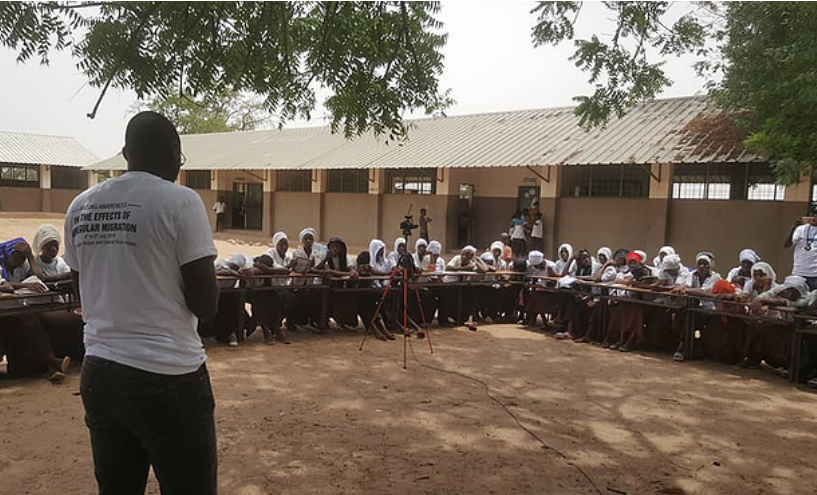
JUST ACT wants to appeal primarily to the young population of the region. The organisation was significantly involved in the implementation of an event where young people and their families were informed about the dangers of illegal migration. Special about it was the participation of the organisation YAIM (Youth Against Irregular Migration). This organisation was founded by some young returnees and its aim is to tell their peers about their own negative experiences during their escape and to motivate them to look for perspectives in The Gambia (https://www.facebook.com/yaimgambia/ ).
A film showed the more than 100 participants numerous catastrophic and dangerous conditions when crossing the desert such as the inhuman practices of the human traffickers. For more information about the awareness workshop see --->
YAIM is supported by an Italian NGO called Coopi international and the Gambian National Youth Council. A group of young people involved in YAIM also fights for more perspectives for the young people in the region. Creating perspectives would enable them to live an independent life in the community. For this to succeed, not only committed young people are needed in the region, but all actors in political and social life - in the country itself as well as all over the world - are required to support these goals and to create appropriate economic and social framework conditions.
The commitment of JUST ACT purchases a similar goal. The association trains young women and men as guides for tourists and educates them in terms of community-based tourism - which the young people carry to their villages as a sustainable development perspective.
The concession of the Youth Excellence Award 2019 to the director of JUST ACT, Omar Jammeh, is certainly a sign of appreciation – not only for Omar, but also for the entire organisation. The prize is awarded annually by "The Stone Circle", The Gambia's most important news website designed by young people, which provides information about young people's contributions to the country's development. Congratulations!
LANDSCAPE OF THE YEAR 2018/2020 – SENEGAL/THE GAMBIA NEWS (27)
Youth Exchange Janjanbureh/Koungheul – students as advocates for the environment
by Mamadou Mbodji/Vice-President Naturefriends International
Within the activities of the Landscape of the Year Senegal/The Gambia, meetings between students from the Janjanbureh Upper Basic School and the Collège d’Enseignement Moyen Koumbidja Socé (Koungheul) were organised on two weekends, which led to close relationships. 20 students between 13 – 17 years old and two of their teachers were welcomed in Janjanbureh from 14.-16. and in Koungheul from 28. – 30. June respectively.
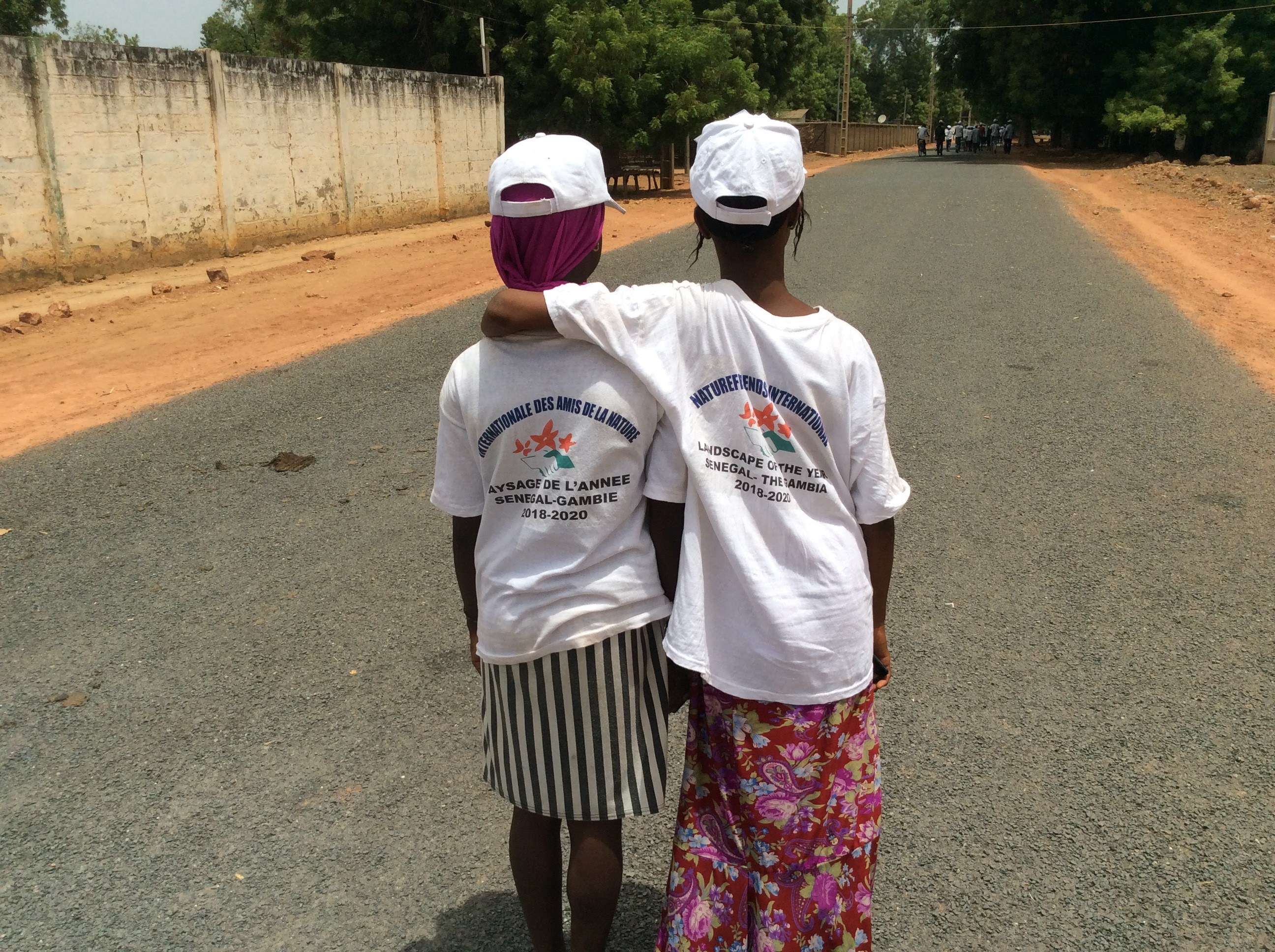
The atmosphere during the meetings was warm and festive, characterized by mutual sympathy and friendship. They offered the chance to explore the joint cultural values of both countries; the hosts were singing and dancing to local folklore when they welcomed their guests and carried their luggage.
On both weekends, historically and culturally interesting places were visited, and the guests met the locals, discovering similarities regarding the economic circumstances and daily life. In the evening, the participants enjoyed playing theatre and different games.
The meetings were supposed to increase the environmental awareness of the participants in order to equip them for the fight against biodiversity loss and to educate them to be motivated environmental activists. The students were also introduced to habits which should help them to fight against waste in general and especially against plastic waste as responsible citizens. In this context, sketches were performed condemning deforestation and promoting rational utilization of natural resources.
In addition, soccer games for the boys and handball games for the girls were organised, which were a lot of fun and strengthened the sense of community as all teams were mixed and true Senegalese-Gambian teams.
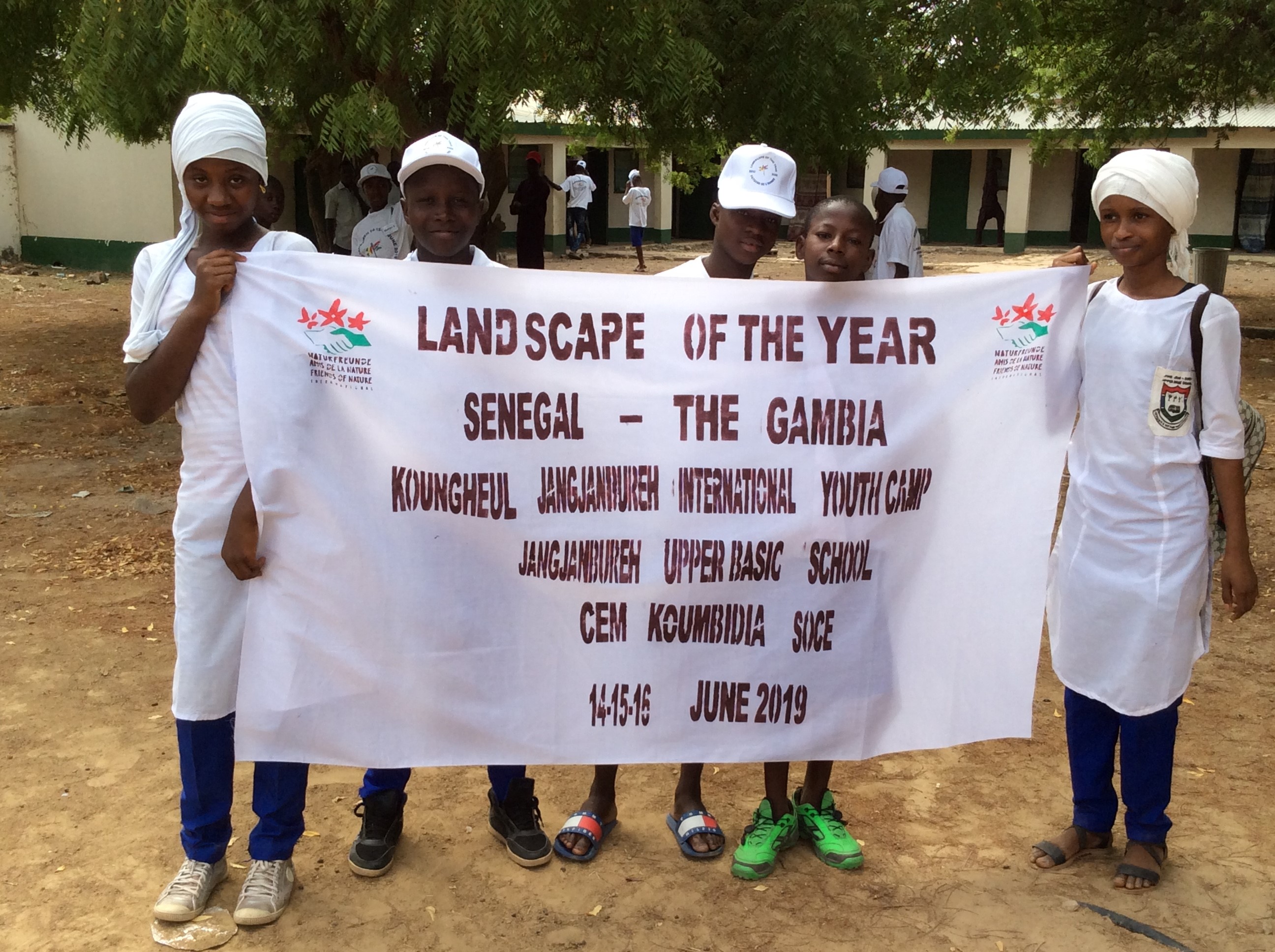
In both cities, government representatives and traditional Chiefs welcomed the initiative as it strengthens the centuries old relationships between the people of both countries. Naturefriends International has contributed to sustainable connections between the people through education as these meetings brought together young people from two very different educational systems. All participants received a diploma to show their initiative to become future ecological leaders. The earlier they are equipped to do this, the sooner they will start bearing their responsibility.
Many tears were shed at the departure. All participants felt that deep and honest relationships had been formed and they hope to transform them into long-term friendships.
A special thanks goes to Ingeborg Pint who had the idea for those unforgettable youth meetings and to Naturefriends Offenbach am Main, who helped to finance the project.
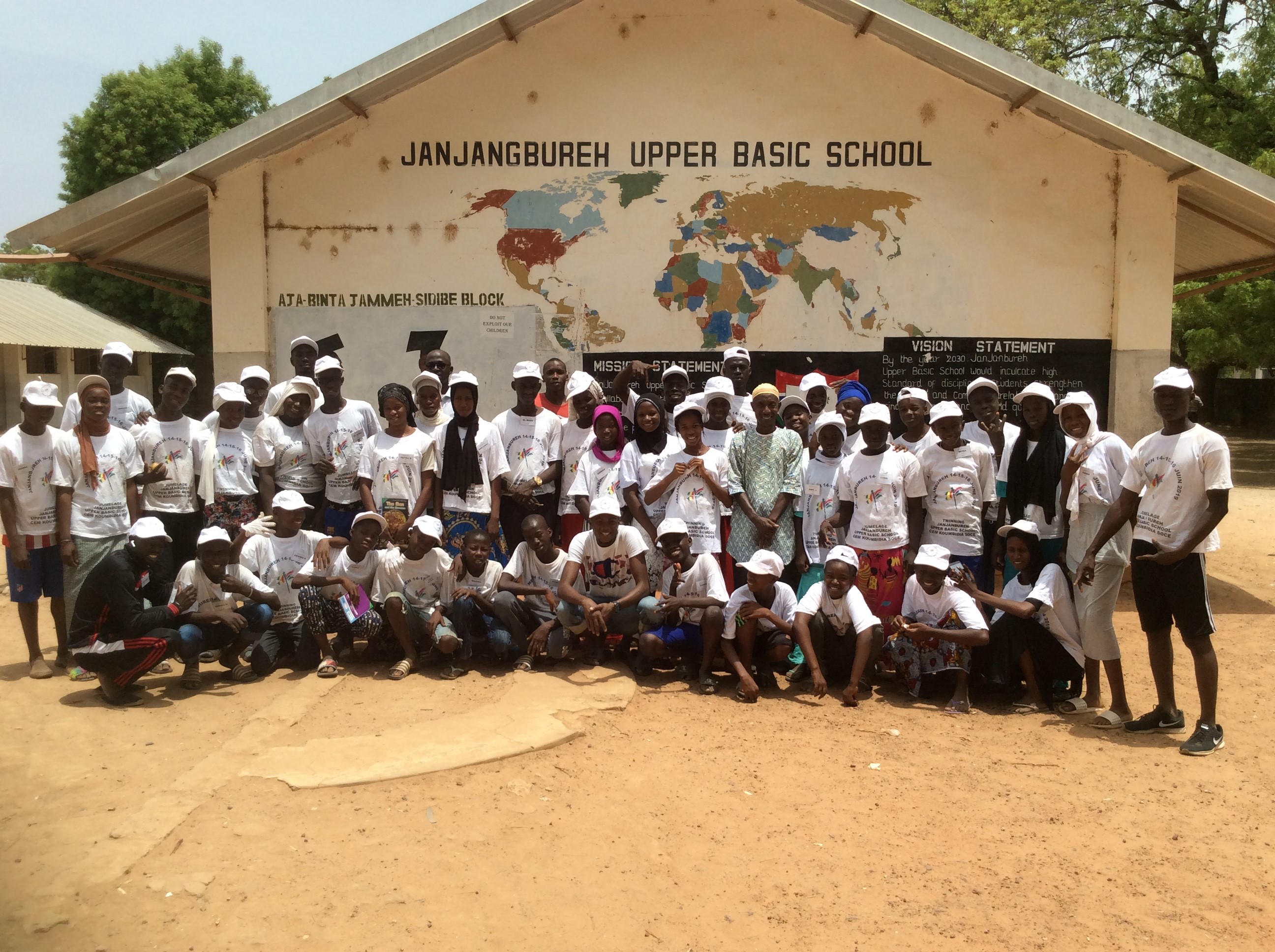
More photos and informations:
LANDSCAPE OF THE YEAR 2018/2020 – SENEGAL/THE GAMBIA NEWS (26)
Independent local radio station in Senegal – the example of Radio Koungheul FM
In Koungheul, the Senegalese centre of the Landscape of the Year, Naturefriends play a big role in designing the programme for the local radio station “Radio Koungheul FM”.
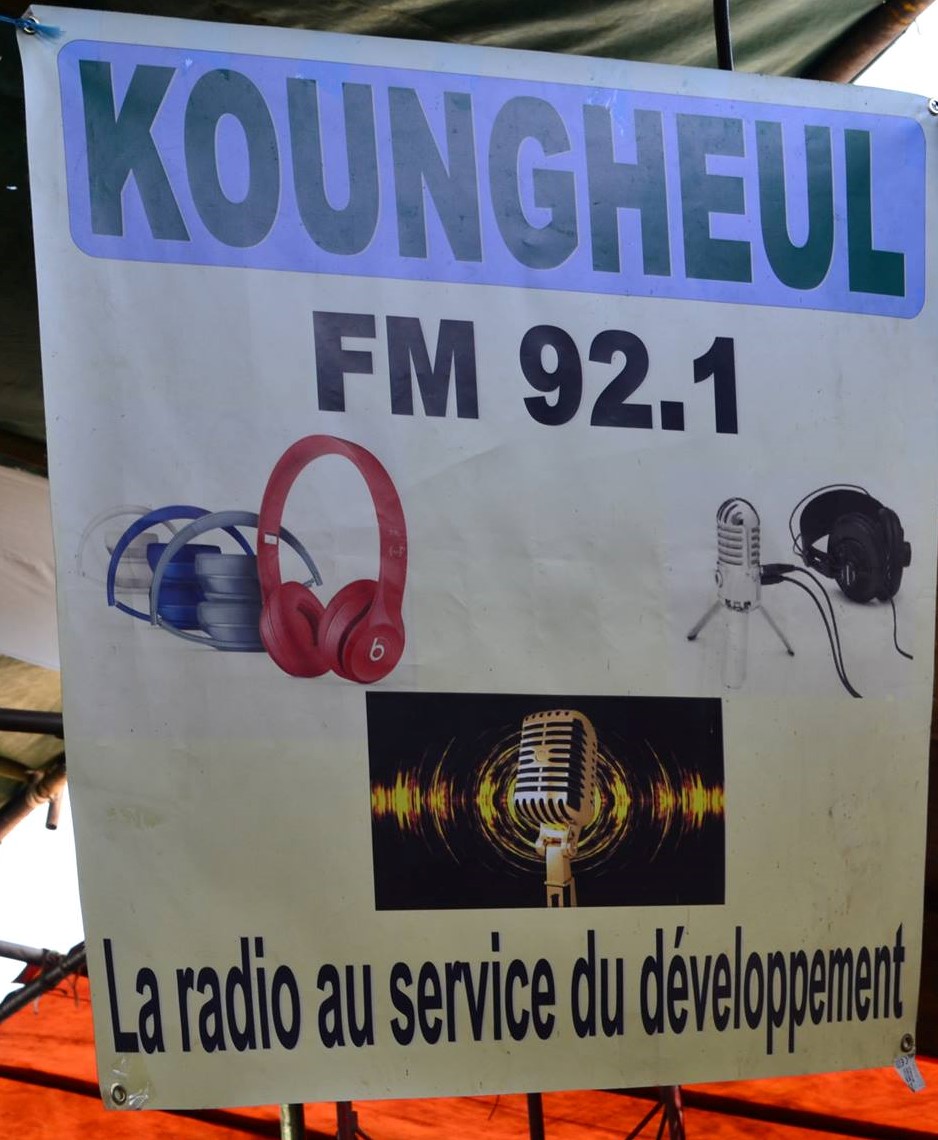
President, Souleymane Mboup, who is also the Deputy Mayor, leads this independent, people-oriented broadcasting station, which is part of the national association of community radios (Union des Radios Associatives et Communautaires URAC) together with about 100 other members. Souleymane Mboup is their Vice President.
Despite the wide distribution of smartphones in Africa, local radio stations still play an important role as a medium which covers regional issues and gives the local population a voice. They are especially important for the high number of illiterate people and discuss questions regarding the economic and social development of the local community. They also include the remote villages and listen to their concerns.
For a functioning community, the critical voice of a local radio station is essential.
Radio Koungheul FM is an example for the implementation of the „radios communautaires et locales’“ mission. Koungheul is ethnically and culturally diverse; Radio Koungheul FM is the only medium that addresses at least some of the local population in the city and the villages in their own language: The station is on air for five hours a day and broadcasts in Wolof, Poular and Socé.
As an independent citizen’s radio, Radio Koungheul FM tackles issues such as health, development, youth and women, the environment and many more. Locals from the city and the surrounding villages are actively involved in designing the programme and participate in local development processes. It is important that the residents have a chance to speak for themselves, as well as giving NGOs and regional authorities a platform.
Environmental and climate protection, as well as regional development, are topics that are also of importance for Naturefriends. On a regular basis, they are present via their own shows or by participating in programmes. Especially the Landscape of the Year received and still gets a lot of attention and coverage. Thus, also remote villages, which are often cut off from the flow of information, as for example due to the climatic conditions during the rainy season, are still being informed about Naturefriends and their work.
Although Radio Koungheul FM – just like many other independent local radio stations – is struggling to make do with limited (financial, technical, personnel) resources, this medium enhances their quality of life, by giving the local community active and passive access to information.
LANDSCAPE OF THE YEAR 2018/2020 – SENEGAL/THE GAMBIA NEWS (25)
News from Janjanbureh
Just Act, the partner organisation of Naturefriends Gambia, has updated their website.
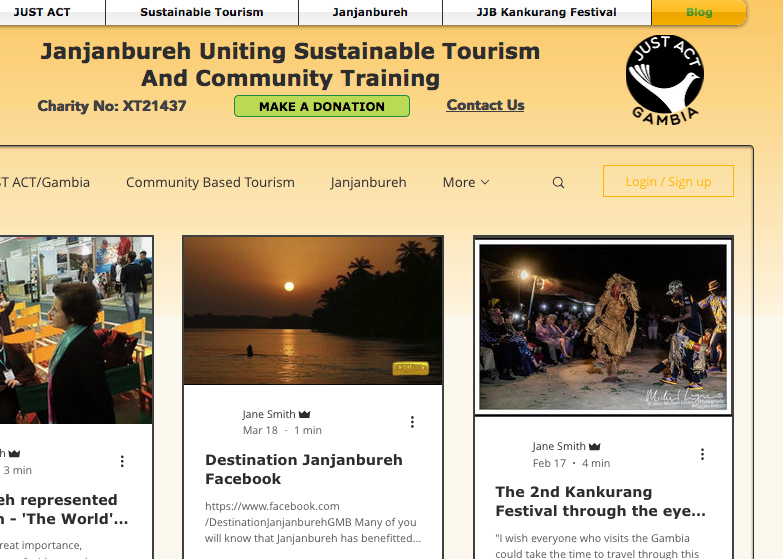
You can find the newest blog articles here: https://www.justactgambia.org/blog. In addition, you can find the link to the new Facebook page “Destination Janjanbureh”. The first articles give information about the history of the city and current issues (in English only).
LANDSCAPE OF THE YEAR 2018/2020 – SENEGAL/THE GAMBIA NEWS (24)
The Kankurang Festival in Janjanbureh - The Landscape of the Year as a Catalyst
by Ingeborg Pint
Already for the second time Naturefriends participated in the Kankurang Festival in Janjanbureh, on the occasion of a group trip of Naturefriends Baden (Germany) to the Landscape of the Year.
This time the Festival lasted three days, from Friday 18 to Sunday 20 January 2019. The highlight was, on Saturday evening, the presentations of 15 groups – “real” Kankurangs and other masquerades like Zimba, Fairy, Kumpo, Hunting Devil and others. The supporting programme included guided tours in and around Janjanbureh, as well as craft and cooking workshops.
The Kankurang tradition
In the Mandinka tradition (Senegal and The Gambia) a Kankurang is a figure costumed from head to toe, whose identity is not recognizable and who has to provide for the protection of the initiates during initiation and circumcision rites, but also for order and security in the community in general. He (there are only a few female Kankurangs) embodies the spiritual and moral values of the traditional Mandinka society and is surrounded by many secrets. On the occasion of its inclusion in UNESCO's List of Intangible Cultural Heritage in 2005, it was emphasized that the Kankurang "is a factor contributing to social cohesion, and to the transmission and teaching of a complex collection of knowhow and practices underpinning Manding cultural identity which is guarded by the initiates".
The Kankurang Centre next to the fairground in Janjanbureh provides detailed information about this tradition and the various Kankurangs and other masked figures. Here the visitors learn what role each Kankurang type is assigned to and what the costumes consist of: bast fibres, mahogany branches and the bark of the camel foot tree (Bauhinia variegata) are the main components.
The Kankurang Festival
So much for the traditional ritual background of the masquerade. Current Kankurang masquerades appear in a different setting, they are "performances", "shows", which in the eyes of many have contributed to the banalisation of tradition. Through the commercialisation and touristic "use" of the Kankurang tradition, which thus becomes common property, the originally ritual processions lose their aura.
Thus, the Kankurang Festival is also to be seen as a performance, as a "show” and is a tourist attraction for Janjanbureh and Gambia’s Central River District. It dates back to 1983 and was held regularly until 2008. After a ten-year break, it was reactivated in January 2018 on the occasion of the kick-off event of the Landscape of the Year Senegal/The Gambia and is now included in The Gambia's national cultural calendar as an annual event in the second half of January. The Landscape of the Year can, therefore, be considered as a catalyst for the preservation of traditional cultural assets in a new context.
With some concern, however, it is seen how climate change and deforestation also affect the Kankurang masquerades: almost all the figures should be originally dressed in natural materials – leaves, bark, shells, etc. Especially the mahogany resources have decreased dramatically, so that more and more substitute materials are used for the costumes of the Kankurangs.
The festival takes place at a traditional place of worship: the "Tinyangsita" square. The spectators stand or sit on three sides of the quadrilateral, at the fourth there are stalls with products of different cooperatives and tourist souvenir articles. Here, too, it becomes evident that this is a carnival-like event, inspired by the traditional parades of the Kankurangs, which have a ritual background.
This "carnival", however, is very impressive – as the sun sets, the square gradually fills up and a master of ceremonies announces the first Kankurang group. Now one presentation follows the other – the whole programme lasts about three hours. Again, and again drum rolls accompany the Kankurang in his songs and dances. Special applause goes to a group of figures who do not come from the Mandinka tradition: Zimba, the "false lion" – a person dressed up and made up as a lion, accompanied by his "wives", who are portrayed by men. The variety of the groups is impressive, the audience reacts enthusiastically.
The costumes of the figures too, illustrate the departure from tradition. Instead of plant materials, one sees wool and plastic, and the costume of a Kankurang’s companion is covered over and over with crown corks of various drinks. The young men dressed as Zimba’s wives wear shoes with provocative high heels, lascivious clothes and fishnet tights. This is where tradition and modernity meet.
The impressive conclusion of the programme is Jamba Jabally, a figure wrapped entirely in foliage, whose singing – even if one does not understand the words – has a lasting effect. This calm and haunting performance is the signal for the spectators to slowly leave the festival ground. It is perhaps best suited to recreate the originally cultic background of the Kankurang masquerades.
You find more pictures on our tourism_LOG.
LANDSCAPE OF THE YEAR 2018/2020 – SENEGAL/THE GAMBIA NEWS (23)
Unforgettable moments and heartfelt encounters: my journey to The Gambia and Senegal in January 2019 by Brunhilde Schöll (Naturefriends Baden, Germany)
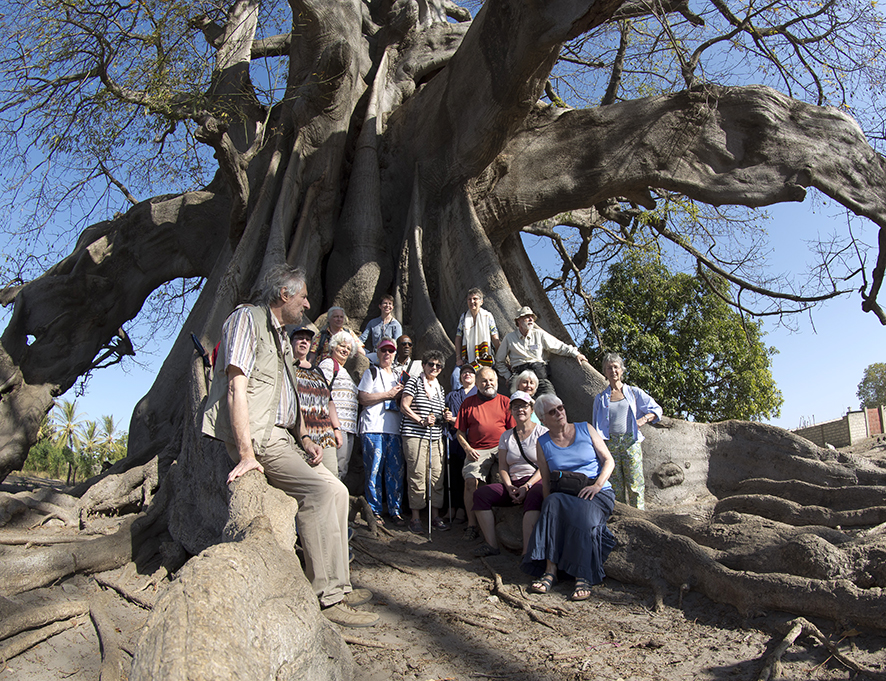
I am back from a journey that really moved me. A holiday with Naturefriends Baden to Senegal and The Gambia.
The connection between Naturefriends Germany and Senegal is nothing new. However, last year something happened that no one thought possible: A region in The Gambia and Senegal was declared “Landscape of the Year” by Naturefriends International. For the opening festivities last year in January, a trip through the Landscape of the Year took place.
Naturefriends Baden now went on a similar tour. The first part of the holiday took us to Janjanbureh in The Gambia. There, we were welcomed as guests of honour during the revived Kankurang Festval. The Naturefriends were still remembered fondly from their visit to the event last year and we were warmly welcomed.
We visited a few schools in The Gambia and Senegal, which have their own active Naturefriends groups – I found that pleasantly surprising. The encounters with the teachers and their students were a great experience. We were greeted with great kindness and they told us about their current projects. These young people are really interested in nature. Global warming worries them a lot and they are determined to be active in numerous projects.
With the help of Naturefriends many trees have already been planted in the courtyards of the schools and the villages. They proudly showed us the little trees, which for the most part have grown a lot. Because of the dry and meagre soil this cannot be taken for granted – they need to be constantly watered. Especially in the villages those fruit trees are valuable, as they provide shade and offer additional income when locals sell the fruit. (More information about the project, which was funded via the Naturefriends Climate Fund can be found here: https://climatefund.nf-int.org/en/content/trees-future-0)
Especially the women’s projects we visited really impressed me, as for example the recycling project “The Recycling Women of The Gambia”, as well as the women’s initiative, which has been planting vegetables in a small forest for years now. The women have also tried different types of fruits and vegetables and by now have enough customers for their produce. This has created a steady income for the women.
In those two weeks, we had so many positive encounters that I simply cannot describe them all. After the round trip it felt like coming home when we were back in the Naturefriends House in Petit Mbao, close to Dakar. What was surprising for me was the big difference between the city of Dakar, with over a million inhabitants, and the areas we visited. In Dakar, you can find skyscrapers, modern shops, restaurants and hotels just like in every big city. It is notable that there is much construction going on and that the population is very young. This shows that there will be a fast development.
This journey left a huge impression on me and I am proud that Naturefriends, with their international connection to Naturefriends in Senegal and The Gambia, help us to have a more global perspective on the world. Climate change affects all of us, even though living with it in Europe is much more comfortable – thus it is our obligation to support the people in Africa.
https://climatefund.nf-int.org/
Landscape of the Year 2018/2020 – Senegal/The Gambia News (22)
Youth Exchange in the Landscape of the Year – Senegal/The Gambia during the schoolyear 2018/2019 by Johannes Borst-Rachor, NaturFreunde Offenbach
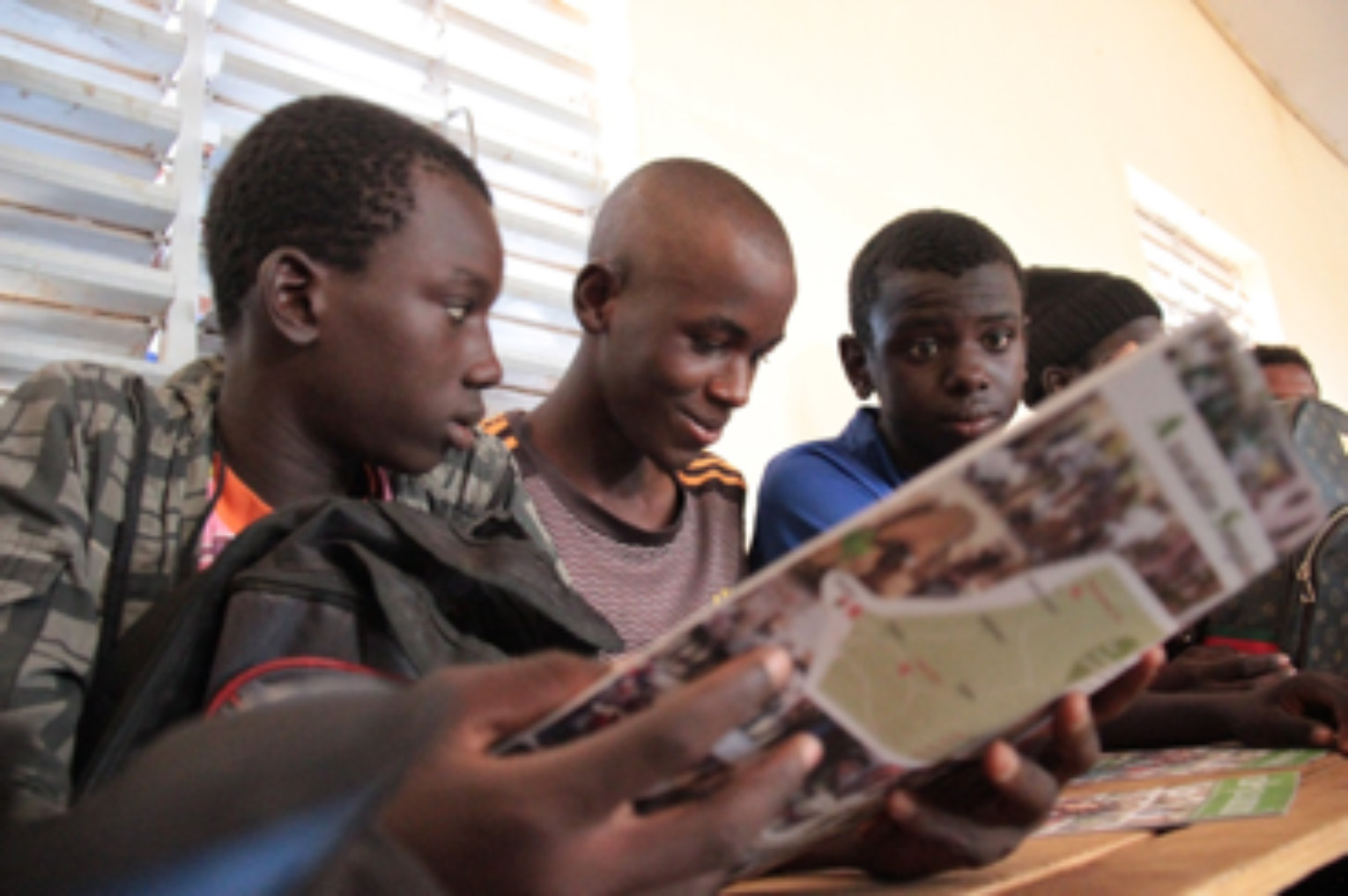
Young people play an important role in the Landscape of the Year 2018/2019. Naturefriends from the local group in Bremen were able to experience this first hand during their trip to Senegal and The Gambia. To enable cross-border visits between young people in the region in order to cultivate international understanding, we kindly ask for your support.
Young Senegalese Naturefriends visit the partners in Janjanbureh
Many African Naturefriends are pupils and students, especially in the Senegalese association Association Sénégalaise des Amis de la Nature (ASAN). The opening ceremony of the Landscape of the Year in January 2018 in Koumbidja Socé near Koungheul (Senegal) was mainly prepared by pupils from the local Collège d’Enseignement Moyen (Middle school). Naturefriends Senegal work together with the youth organisation Just Act in Janjanbureh in The Gambia.
Thus, activities in the Landscape of the Year need to include young people, and encounters between Senegalese and Gambian students in the border region need to be organised in order to exchange information about nature conservation and environmental protection, as well as sustainable development. The Senegalese students will be able to draw on their experience from their participation in the Naturefriends groups.
Since none of the young people has yet visited the neighbouring country, the planned exchange is also a chance for cross-border meetings and the beginning of solidarity among neighbours – a core element of every Landscape of the Year. It is also helpful that the participants speak Wolof, the most important local language in Senegal, which is also spoken in The Gambia. Such encounters play an important role to live together in peace across borders.
Structure of the meetings
20 Senegalese pupils will visit Janjanbureh and 20 Gambian teenagers will visit Koungheul. The encounters will last for three days and the students will be accompanied by two mentors. The cities are only 45 km away from each other, so there will be a lot of time for the activities. During their stay, topics such as history and culture of the neighbouring regions, ecosystems and possible threats, environmental issues, climate change, the importance of planting trees, as well as general topics as for example the goals of the international Naturefriends movement will be discussed. The events are coordinated by Mamadou Mbodji, Vice-Secretary General of ASAN, who oversees the Landscape of the Year project for the ASAN board.
The costs per meeting are 1.500 Euro, in total 3.000 Euro are needed.
Naturefriends Offenbach would like to collect the amount needed and kindly ask for donations. This is their account: Städtische Sparkasse Offenbach, BIC HELADEF1OFF. IBAN DE48 5055 0020 0009 0055 44, Reference: Youth exchange Senegambia. 100% of the donations will go towards the youth exchange.
Landscape of the Year 2018/2020 – Senegal/The Gambia News (21)
African women are a driving force for development: Encounters during a journey through the Landscape of the Year by Marie-Bernard Lefebvre-Dumont
There were many interesting moments during our journey through Senegal and The Gambia in November 2018, which I took part in together with a dozen other Naturefriends, initiated by Naturefriends Bremen and coordinated by Mamadou Mbodji and Ingeborg Pint. Today, I would like to share my impressions from meeting different women’s groups in the Senegalese and Gambian villages.
The first village we visited was Maka Gouye, a few kilometres away from Koungheul, at the street towards The Gambia. There are family farmsteads owned by different ethnic groups: Wolof, Peul and Toucouleur. In the Wolof district in the village they showed us the vegetable gardens while we were on a short hike to the Gambia River. Local women take care of the gardens as it is primarily women’s work, although the men and teenage boys prepare the soil and take care of other preparation work. One of the young adults who accompanied us pointed out the variety of the vegetables: Corn, millet, sweet potatoes, tomatoes, chilies, pumpkins …
One of the projects which are implemented during the Landscape of the Year (LoY) concerns sustainable tourism. A seminar on the topic was held by our Senegalese Naturefriends and was attended by both men and women. One woman proudly showed us her certificate. It is clear that women will play an important role in this area.
The next day, we continue our journey to The Gambia. After a stop in Wassu where you can find megalithic stone circles, which are a UNESCO world cultural heritage site, we arrive in the village Jamaly Canyado. Omar, the director of Just Act (the Gambian partner organisation of the LoY) and two young men from the organisation accompany us. We meet a group of women; in total there are 200, coming from six villages. Different products are made, which create additional income for the families when they are sold – this allows the children to go to school. They grow organic vegetables, but also dye fabrics, knit, produce soap and jewellery, etc. There is a sewing machine available, however it cannot be used constantly due to frequent power outages.
One problem concerns the distribution of goods. The markets are far away, which decreases the quality of the freshly harvested crops. The women look for better solutions to sell their produce. Their vegetable gardens are definitely comparable with vegetable gardens in Europe.
In Janjanbureh, The Gambia, we met a woman who fights against female genital mutilation, which is still being practised despite the ban from 2015. She herself was part of the circumcisions as a helper. After she realised the severe consequences this practise has, she started to fight against it. One of the issues that needed to be faced was finding other employment opportunities for circumcisers. Thus, she took part in developing a cooperative for growing vegetables; in addition, she gives talks on the topic to raise awareness among the general public.
After Janjanbureh we left The Gambia – and thus the Landscape of the Year - and went to Ziguinchor, capitol of the Casamance.
During our meeting with the Naturefriends group and other associations in Ziguinchor one afternoon (with music, dances and a presentation of their work), we met Malya’s women’s group. These 13 women not only grow vegetables but are also organised as a cooperative since 2004, where they produce the so-called “bio-coal”, which emits less CO2 than regular coal. It is for example made from dead mango tree leaves, from coconut waste, as well as from cashew nuts. They are crushed and burned, the ash is mixed with gelatine, filled into a box with compartments and heated. The cubes are perfect fuel. Although this coal is sold for a bit higher price than regular (char)coal, there is a high demand that cannot always be met. One problem is that the boxes that are used to make the coal wear out fast due to the constant re-heating and need to be replaced. Our group thought it fascinating that the African women have found a way to decrease CO2 emissions.
In Dakar we stayed in Petit Mbao for two days, the house of the Senegalese Naturefriends.
Here, we met the local vegetable farmers, a women’s group in the suburb Kamb.The area where the women farm on, belongs to the water and forest administration and was provided free of charge to the women in 2005. It was comprised of a total of three hectares and was full of waste. One hectare was lost later due to the development of a power line. The vegetable garden makes the lives of the families easier. One part of the vegetables is being sold, another part is consumed by the families. They are organised as a G.I.E (Groupement d’intérêt économique). From 7 – 10 am, the women work in the gardens, then again from 5 – 7 pm, also to organise the sale. The women receive their pay at the end of the month, depending on the number of hours worked. For the heavy work, the women have hired young men and women because they cannot do this themselves anymore. This reduces their income.
The group works with different partners, also with Naturefriends (as for example for expert advice). The automated drip irrigation system was donated by Philip Morris. The pump (financed by Austrian Naturefriends) that was installed in 2008 is powered by solar energy.
The women have become older and the work is getting more difficult. In the beginning, there were 32 of them, now there are only 17 women left – some left, some got married, the younger generation is looking for different, better paid jobs. Nevertheless, the women do what they can to keep the vegetable garden going. They also work with schools. Although the interns coming from the schools are mostly interested in receiving their diploma, they support the group in selected areas. The women are illiterates but have a keen perception and a good memory and can run their G.I.E. without a problem.
What impressed me most when visiting the villages, was the strong will of the women to provide a better life for their families; their energy and imagination, which enables them to solve even the most complicated situations. Over and over again we heard “”We get organised so that our children can study and have a better life”. What else is there to say?
Landscape of the Year 2018/2020 – Senegal/The Gambia News (20)
What happened to our trees? A local inspection by Elisabeth Mathes
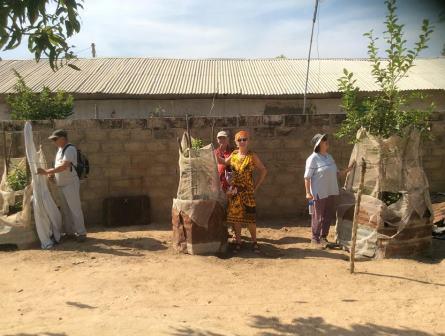
During the Tour d’Horizon in January 2018, many trees were planted in different villages by travellers and local people alike. According to the motto “The best time to plant a tree was 20 years ago. The second best time is now” I wanted to find out what happened to the trees that were planted in January, when I came back in November during our Naturefriends tour.
The success of the plantings was mixed. Most of the small trees are growing well and some of them are already pretty big – both in Koumbidja Socé, Maka Gouye as well as in Janjanbureh. The few trees that were lost have been replanted. Especially some of the trees which were planted in the courtyards in Janjanbureh are really big already. It is hard to believe they are only about a year old. Here, the idea to plant them in the courtyards, has paid off. About the same time a different organisation planted trees on the side of the road. Those trees look puny compared to the ones planted by Naturefriends.
In Korop, the trees were planted outside of the village and they are still pretty small. This could also be because they haven “wrapped up” very well to protect them from hungry animals. In a way this also means that they are well taken care off and looked after.
Selected fruit trees
Different kinds of fruit trees were planted. First of all, the trees were planted to provide healthy food for the residents and also to generate extra income by selling fruit. Especially mango trees were planted, as well as sapodillas. Sapodillas are slow-growing, long-living and evergreen trees, which reach heights of 12 – 18 m. From its white latex, natural rubber as well as chewing gum is made.
In addition, soursops were planted. This evergreen tree can be 8 – 12 m high, its leaves are similar to bay leaves. The fruits – botanically a big berry – can be up to 40 cm long and weigh up to 4 kg.
Furthermore, Tahiti lime was planted, which is also called Persian lime or seedless lime. It is fast-growing, strong and resistant. Its fruit are used to make juice and essential oils or are dried to use as spices. The juice helps against irritations in the mouth and throat and against coral stings.
A few moringa trees were planted as well. This inconspicuous looking tree has many remarkable properties. Unfortunately, there is some negative superstition associated with the tree and a few people do not want to have it on their property. Oil can be extracted from the seeds and used for salads or to make soaps and cosmetics. The ground seeds can be used to disinfect water. The young, fleshy roots sometimes serve as vegetables, the leaves are cooked like spinach or boiled as tea, as well as dried and processed into powder.
It was great to see how dedicated the community is towards the young trees. They are protected from animals with rocks, boards or sheets. When we visited, the soil around the trees was still wet from being watered that morning. If the good care continues, the plantings will probably be successful.
More information: Naturefriends Climate Fund
Landscape of the Year 2018/2020 – Senegal/The Gambia News (19)
The Landscape of the Year at a second glance – personal impressions from Naturefriends Bremen’s journey by Ingeborg Pint
The „Tour d’Horizon“, the first trip to the Landscape of the Year 2018/20 in Senegal/The Gambia, was characterized by two major events – the opening ceremony in Koumbidja Socé (Senegal) and the Kankurang festival in Janjanbureh (The Gambia) – as well as planting fruit trees in four villages.
Now, at the end of November/beginning of December, I got the chance to visit the region a second time together with a travel group from Naturefriends Bremen and was curious to see what I would discover at a second glance. My expectations were not disappointed – the region has a lot of potential, just waiting to be discovered. Naturefriends Kongheul and their partner organisation Just Act in The Gambia showed us many new and interesting aspects and I was able to see that since the journey in January, tremendous progress has been made.
History and Culture
During our walk through the town, Cheikh Diakhaté, who coordinated the Landscape of the Year in Koungheul, showed us how important the city was when the railway line Dakar-Niger had an important train station here. He also pointed out that Khonguel still plays an important role today as a typical African city at one of the main transit routes: It is possible to buy almost anything here – getting a spare charger for my phone was no problem at all – and people travelling from east to west can stock up on supplies.
In the villages around Khongeul visitors can discover many interesting details, as for example a village elder who recites part of the medieval history of a historically significant location. There are numerous cultural sites we have yet to discover.
On the Gambian side, guided tours with different themes through Janjanbureh are offered – history, culture and nature being the most prominent topics. The routes are described in a folder. What impressed us most was visiting Aja Babung Sidibeh, who used to be a circumciser for girls but later understood the dramatic consequences this practice has on women and girls. She now hosts awareness-raising seminars – and is widely respected for this.
Nature and tree plantings
The nature trail close to Maka Gouve is taking shape already: During a workshop in September 2018, locals were trained to accompany tourists on this path. The trail leads away from the village to the peripheries and the guides talk about the local flora – almost all of the plants have a therapeutic effect. The trail offers a beautiful view of one of the side arms of the Gambia River, where water lilies bloom and numerous birds can be seen. Through vegetable gardens we come back to the village. The plan is to not put any signs on the trail but to encourage locals to guide tourists who are interested. The local authorities have confirmed their help in advertising the offer.
The majority of trees planted during the Tour d’Horizon in January are thriving – a few small mishaps do not take away from the positive results. Often, it is hard to believe that the trees were only planted ten months ago. Naturefriends are planning to re-plant the trees that didn’t thrive.
Tourism infrastructure
The restaurants and hotels in the region are still modest and the service could be improved sometimes. However, Just Act has just trained a few young women free of charge to be able to work in the hotels – while we were there, they were doing an internship.
And: We especially like the “Cheers Bar & Restaurant” at the river bank of the Gambia River – definitely worth a visit. The young owners greet the tourists in a nice way and bring them to the area. They bring tables, chairs, mattresses and cold drinks – a great example. Omar Jammeh, director of Just Act, already set up guest rooms together with a partner and would like to develop the restaurant into a small tourism tourist camp. It can be expected that everything will be done to increase awareness about sustainable tourism among the guests.
The return journey from The Gambia to Senegal is still an ordeal for those taking the ferry at Farafenni to cross the river. However, this trip will become easier once the new bridge opens in January.
Outlooks
I feel that the first Landscape of the Year in Africa is well on its way. For me and my fellow travellers it was great to see the initiative of the young people – be it in the Collège in Koumbidja Socé or in Janjanbureh where the group around Omar Jammeh works hard to create jobs for the local youth in order to prevent them from going on the dangerous back way to Europe.
It is especially good to see that the tour group spontaneously agreed to organise the financing for the student exchange between Koungheul and Janjanbureh, which should take place before the summer holidays 2019. A great example of solidarity between Naturefriends.
Now the next trip – this time with Naturefriends Baden (Germany) - lies ahead and I am very much looking forward to it!
(December 2018)
Landscape of the Year 2018/2020 – Senegal/The Gambia News (18)
News from Just Act, a partner organisation of NFI: Project start „Community based tourism in Janjanbureh” & A fishing boat against poverty
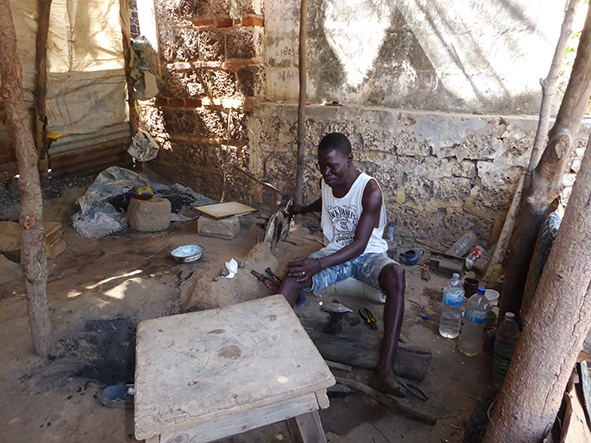
Project start „Community based tourism in Janjanbureh”
Traditionally, a visit to Janjanbureh, the Gambian centre of the “Landscape of the Year”, includes outdoor experiences and insights into the long history of the region. Now, a new project to capture the interest of tourists is planned: Two villages – Jamali and Tabanini – want to start “community based tourism” together:
Five young members of the NFI partner organisation Just Act will play an important role once they finish their education. They will develop tourism offers for both villages – following the principles of community based tourism; including the local community and making sure resources are being used sustainably. The basic idea is to give the local community new sources of income through the visits. This matches the goals of the Naturefriends’ trips to the Landscape of the Year. Naturefriends wish to meet the locals and learn about local crafts and traditions, while making sure the villages benefit from their visit. The official project begin was on October 2nd, 2018, overseen by the Gambian Tourism Board. All present public officials emphasized the necessity to give young people those chances and the hope that they will take advantage of these opportunities.
Omar Jammeh, Director of Just Act and Gambian coordinator of the Landscape of the Year, pointed out that the Regional Youth Committee of Central River Region already implemented important projects to support sustainable tourism in the region with the help of Just Act. This includes for example the Kankuran Festival, trainings to become a tour guide, etc. The projects so far, as well as the new one, shall help in turning Janjanbureh into the second most important tourism destination (besides the coastal region). In addition, the government in The Gambia strongly focuses on projects in their National Development Plan which are implemented for and by young people. The goal is to create jobs through education and specific offers in order to develop perspectives for their future. The planned „Janjanbureh Youth Center“ will be a central hub.
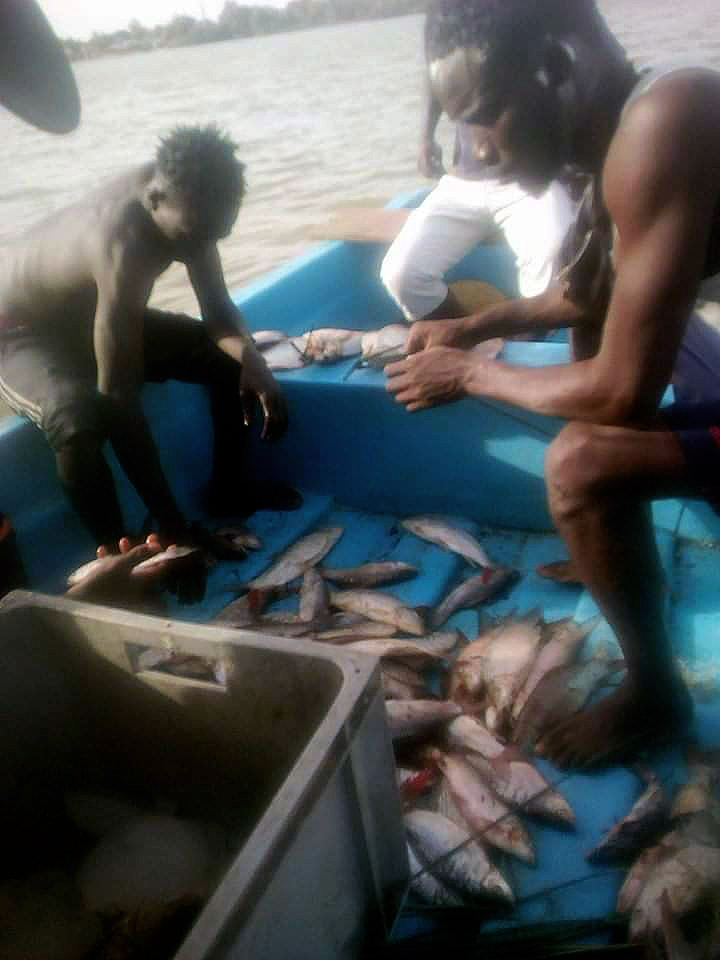
A fishing boat against poverty
The International Organisation for Migration (IOM) and the National Youth Council Gambia both focus in their work to create jobs in order to keep young people from leaving the country. Because of this, a motorised fishing boat made out of fibreglass was given to Just Act at the end of 2017, completely equipped with everything needed for fishing. To ensure proper use, members of Just Act were offered a training by IOM. Now, the boat not only supplies the community of Janjanbureh with fresh fish, but it is also rented out to tourists who wish to fish and is used for excursions through the River Gambia Nationalpark. At least 10 jobs for young people were created that way.
Landscape of the Year 2018/2020 – Senegal/The Gambia News (17)
Living climate justice! The Landscape of the Year Senegal/The Gambia
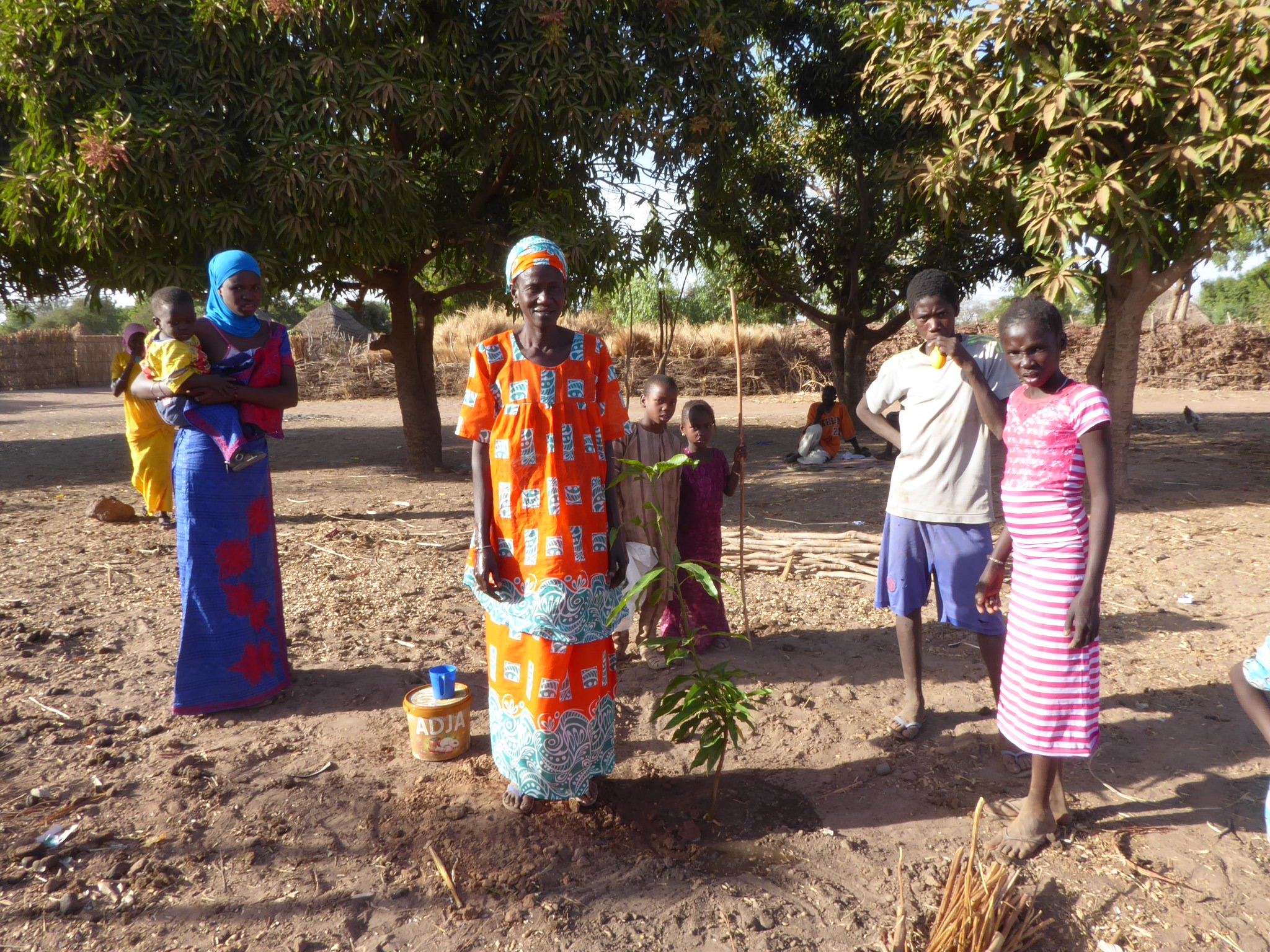
„Living climate justice!“ is the motto of the Landscape of the Year Senegal/The Gambia. To spread the word also in Europe, Mamadou Mbodji, coordinator of the Landscape of the Year Senegal/The Gambia and President of the African Naturefriends Network, travelled to different cities in Southern Germany in October. Mamadou Mbodji spoke at countless events and described the issue from a perspective of someone living in a region heavily effected by climate change and described the devastating consequences climate change has on his home country Senegal: “Dry regions, as for example the Sahel region, are getting even dryer. When the already scarce annual rainfalls are missing, agriculture becomes impossible in a lot of places. Thus, many people have no alternative but to move to the cities, where their prospects are not great either.”
Climate change is already one of the most significant factors for global migration. For years, experts have been warning that the situation will intensify in the next years if no immediate measures for climate protection and for the improvement of livelihood for the people in the global south are taken. Mamdou Mbodji also emphasizes the need for effective climate protection goals, fair cooperation projects and to openly share ideas for a good future. “Fair cooperation projects are not a one-way street like some “development” projects are, where in the end only the big corporations from the industrialised and emerging markets profit. Fair projects require equal partnerships where everyone can participate and are beneficial for both parties, but especially for the local community.”
Naturefriends have initiated a lot of successful cooperation projects in the last years. Earlier this year, 2.000 fruit trees were planted by both African and Wuropean Naturefriends in the Landscape of the Year Senegal/The Gambia, which are beneficial for climate protection, stop soil erosion and supply the local community with fresh fruit in the future(https://climatefund.nf-int.org/en/content/trees-future-0). In addition, an educational centre for girls was opened in the Senegalese region Saint Louis a few months ago, which was built with the support from Naturefriends Germany and the local group Rastatt (http://naturfreunde-rastatt.de/nachhaltigkeit/ausbildungszentrum/index.php). The training started on 1 October and 50 girls are currently participating in the courses.
Naturefriends who wish to support fair projects for climate mitigation can do this quickly and unbureaucratic with a donation to the Naturefriends Climate Fund (www.climatefund.nf-int.org) – and contribute personally to climate justice.
More information:
Klimaschutz-Portal der NaturFreunde Deutschlands: www.naturfreunde.de/klimaschutz
Nord-Süd Kooperationen der NaturFreunde Baden: www.naturfreunde-baden.de/aktiv/nord-sued-kooperation
Naturefriends Climate Fund: www.climatefund.nf-int.org
Landscape of the Year 2018/2020 – Senegal/The Gambia News (16)
Workshop on Sustainable Tourism and Climate Change in Koungheul
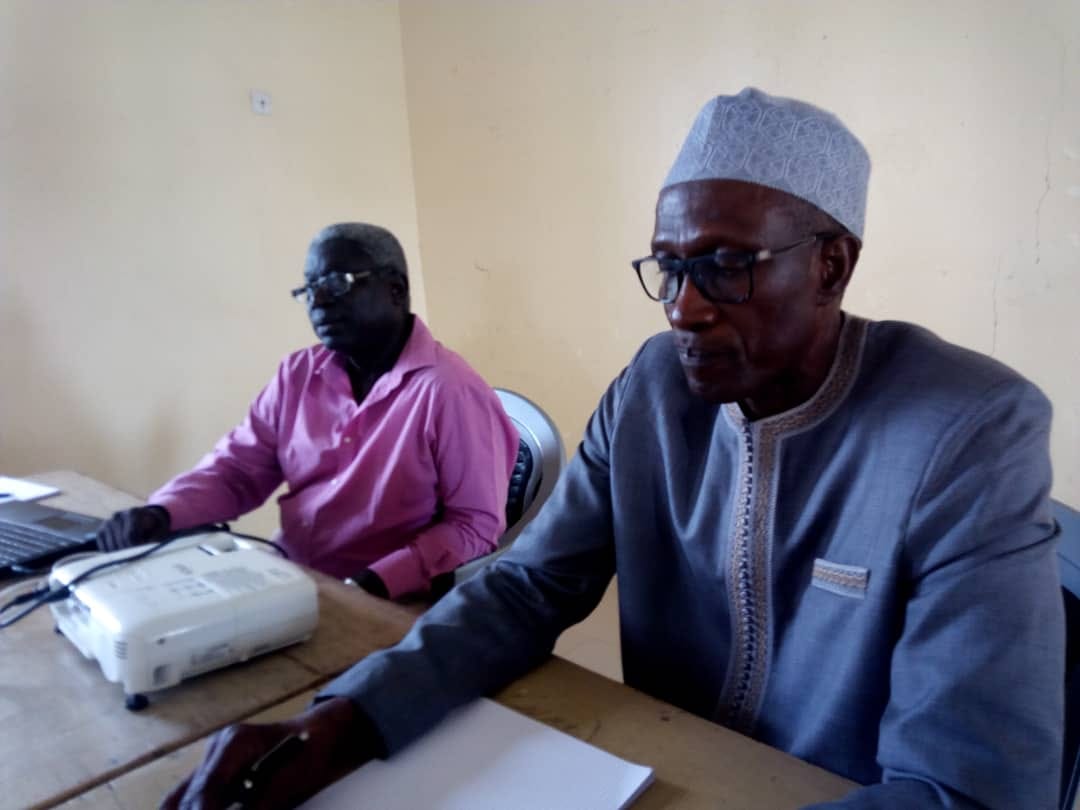
On September 8th and 9th a workshop on “Sustainable Tourism and Climate Change” initiated by NFI took place in Koungheul. Participants included Souleymane Mboup, the deputy mayor of the village, Mamadou Mbodji, NFI Vice President, Cheikh Abdoul Khadre Diakhate, the coordinator of Naturefriends Koungheul, and Omar Jammeh from Naturefriends Janjanbureh (The Gambia). The workshop focused on the naturel surroundings and resources in the region between Koungheul and Janjanbureh, and on the development of a sustainable tourism.
Adama Ba, tourism expert from The Gambia, was one of the speakers on the first day. He opened the workshop with the statement: “Sustainable tourism stands for tourism, which creates benefits for local communities.” In his opinion, sustainable tourism is based upon the involvement and commitment of the local population as well as on attractive natural surroundings. “Ideas and projects for a sustainable tourism have to be developed together with local people. The success of the tourism development in the region will depend on their commitment.”
On the second day, Mamadou Mbdoji spoke about climate change. He presented Naturefriends climate projects, such as the tree planting in the Landscape of the Year financed by the Naturefriends Climate Fund (more information about the project)
More informations (french)
Landscape of the Year 2018/2020 – Senegal/The Gambia News (15)
Students from the Landscape of the Year visit Dakar
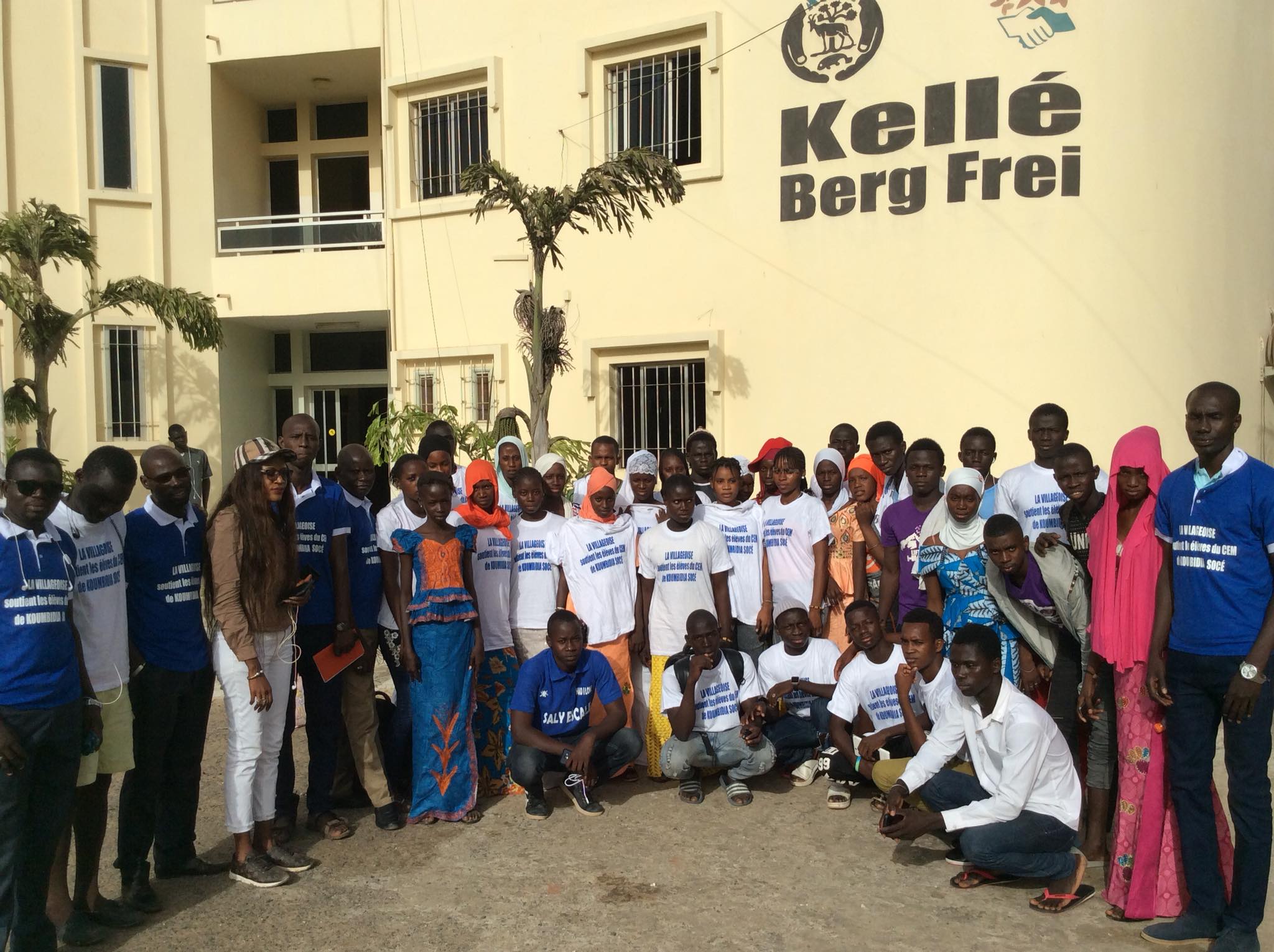
The students from the Collège d’Enseignement Moyen (Middle School) in Koumbidja Socé close to Koungheul contributed greatly to the success of the opening event of the Landscape of the Year. Their accompanying teacher Mahamadou Lamine Fall describes the excursion to Dakar, which the students were invited to by the board of ASAN:
During the yearly school excursion, students from the Collège d’Enseignement Moyen in Koumbidja Socé, the location of the opening ceremony of the Landscape of the Year, spent two days from June 8 – 9 in the Naturefriends House „Maison Alioune Diagne Mbor“ in Petit Mbao, where they visited Dakar and the surrounding areas.
All participating students (20 girls and 16 boys) are members of the Naturefriends group of the Collège or the “Club for education in family affairs” (Club Éducation à la vie familiale) from the school. The students were accompanied by five teachers.
The visit started on the Gorée island, which is a memorial for a dark chapter of human history as it was a focal point for slave trade. In addition, the trips to different museums, historical places and official buildings in Dakar were of great interest. The national board of ASAN used the student’s visit from the region of the Landscape of the Year Senegal-The Gambia to present the role and significance of Naturefriends on the national, regional and international level.
It was particularly important to remind the students that the trees, planted during the huge success of the opening ceremony for the Landscape of the Year in Koumbidja in January 2018, now need to be taken care of. The plantings are part of an international cooperation to promote climate justice and solidarity. The visit to Dakar, a city currently fighting coastal erosion, air pollution and a constant waste problem, gave the students a better understanding of the tremendous environmental challenges facing all of us.
Because of the positive experiences and impressions from the trip, the students understood which challenges each and everyone of them must face and find answers to.
The excursion to Dakar was an important step to increase the environmental awareness of the Senegalese students.
MAHAMADOU LAMINE FALL
Accompanying teacher
A high percentage of the members of African Naturefriends organisations are students from schools and universities. This is especially true for Senegal. Thus, activities within the Landscape of the Year should also include this age group. It is planned to organise meetings between Senegalese and Gambian students in the border region, including mutual visits and sharing of information about questions regarding nature and the environment and sustainable development. The Senegalese students will be able to draw on their intensive work with the Naturefriends groups.
Post on Facebook
Landscape of the Year 2018/2020 – Senegal/The Gambia News (14)
„Mama Africa“ – a holiday amongst friends
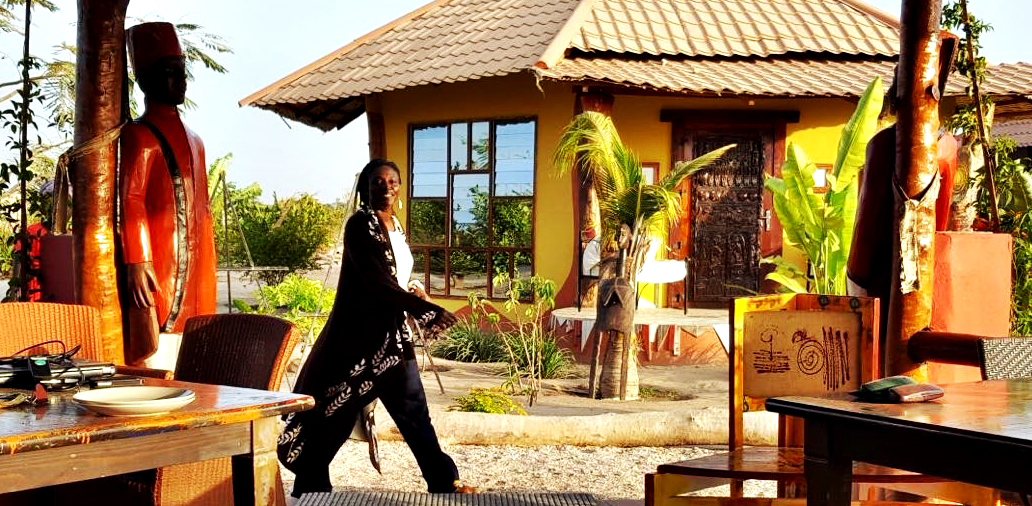
About 300 km to the West from Janjanbureh, the Gambian centre of the Landscape of the Year, the participants of the “Tour d’Horizon” had a short visit with “Mama Africa” in January 2018 and quickly became friends with the Gambian artist Isha Fofana – “Mama Africa” – and her German husband Bernd Ax. ”Mama Africa” is not only an exquisite holiday resort, but also a social project.
The concerns regarding sustainable tourism, match the concerns of the Naturefriends movement. The art centre and the guest bungalows might not be part of the Landscape of the Year but are a great chance to spend a few quiet days before or after the intense experiences from the Landscape of the Year. There are special prices for Naturefriends.
We received the following article from Mama Africa:
Mama Africa, situated in the fishing village Tanji at the Gambia River, is a wonderful place to be inspired by the art and culture of West Africa, to meet the Gambian people and to enjoy nature, to relax and to experience the fresh and creative cuisine. The artist Isha Fofana created a unique atmosphere with her one of a kind Art Centre, the exotic garden and the nine spacious, individually designed guest houses. She is also a wonderful host.
The guest can create their own, personal holidays. The Art Residence is close to the ocean – about ten minutes by foot – and offers room for various workshops and is a good starting point for further explorations, as for example a boat trip on the Gambia River or an excursion to Senegal. The fish landing in Tanji is a colourful event every single day and the Tanji bird sanctuary is close by. Another idea is to simply enjoy the warm sun in Africa and the comfortable tranquillity or to be inspired by the art.
At the same time, Mama Africa is a non-profit association, who especially supports women and girls in different life situations and actively helps them. For Isha, it is important that the women receive an education, help and are enabled to face everyday problems while being equipped to create their future. An environment, supporting the economic empowerment of women, needs to be created.
Mama Africa is the right place for everyone who wants to experience the country, the people as well as its culture and nature while supporting sustainable tourism development, benefitting the local community. All Naturefriends and their friends and family will receive a 20% discount when booking with Mama Africa. Just put in the code “Naturfreunde” when booking!
More information about Mama Africa:
https://de-de.facebook.com/Mama-Africa-Art-Residence-Art-Center-Gambia-1711704182467354/
The report about the visit at Mama Africa during the Tour d’Horizon (German, English, French):
https://tourismlog.wordpress.com/2018/02/19/day-8-fairtravelling-landscape-of-the-year-senegal-the-gambia/
Landscape of the Year 2018/2020 – Senegal/The Gambia News (13)
News from JUST ACT, partner organization of NFI in the Landscape of the Year
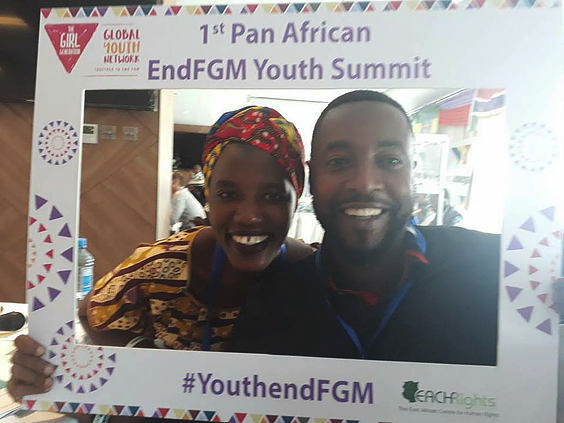
NFI has reported on its partner organization in TheGambia (JUST ACT - Janjanbureh Uniting Sustainable Tourism And Community Training) on several occasions, most recently on the blog about the Friends of Nature journey "Tour d'horizon" in January 2018 (interview with the organization's director, Omar Jammeh, in English, German and French ---> ) and in the Info-Mail Science (German).
These reports concerned the work of JUST ACT in the field of sustainable tourism. This is currently taking place within the framework of the "The Gambia Youth Empowerment Project" (2017 – 2021), funded by the EU and the ITC (International Trade Centre), to “boost job creation and support long-term economic sustainability for the Gambia”.
In view of the fact that 60% of the Gambian population are young people under the age of 25, this program is also likely to be seen as an instrument for "fighting root causes of migration”. JUST ACT is carrying out various actions as a youth organization competent in the field of sustainable tourism. The organization was also involved in the project launch of a “Youth and Trade Roadmap of the Gambia - Tourism Sector” on May 15, 2018.
But JUST ACT is also involved in action on a major societal issue, i.e. the fight against female genital mutilation (FGM). FGM has been banned in The Gambia since 2015 and in Senegal since 1999 and is punishable. Yet, these inhumane practices are still deeply rooted in many African countries. The young – female and male – leaders and members of JUST ACT feel that it is indispensable to vigorously fight against it and train trainers in this field. This has been done since 2017 with the support of the organization "The Girl Generation". Omar Jammeh, as a trained trainer, participated in the first Pan-African Youth Summit to end FGM, saying in his statement: "FGM is a deep-rooted inequality between male and female, and constitutes a life-threatening form of discrimination against women and girls. The practice also violates their rights to health, security and physical integrity, their right to be free from torture and cruelty, inhuman or degrading treatment, and their right to life when the procedure results in death".
Detailed information on http://www.justactgambia.org/girl-generation-fgm
Links:
Landscape of the Year 2018/2020 Senegal/The Gambia News (12)
The Women’s Initiative The Gambia in Njaw
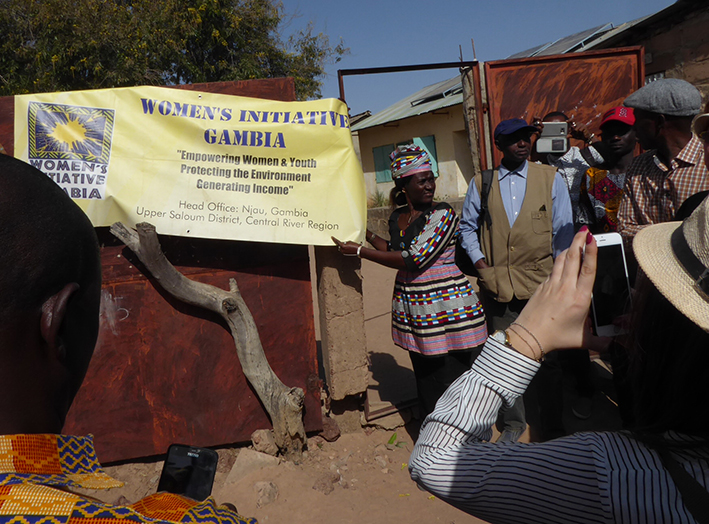
During their travels to African countries, Naturefriends are especially interested in the role of women and visit exceptional women’s projects. For the “Tour d’Horizon” in January 2018, the participants got the chance to get to know a fantastic women’s association. Arlette Orry wrote an article about the visit for the current newsletter of Naturefriends France. The editors and Arlette gave us permission to print her text here:
„In Niaw, a small Gambian village at the border to Senegal, we visit the association ‚Women’s Initiative The Gambia‘. A group of women welcomes us with songs and dances, they wave branches to symbolise their work for environmental protection. The initiative’s founder had to quit school when she was eight years old because her father died. She stays home and tries to figure out how her future could look. She knows how to read and write and the village administration asks her if she will be willing to write the minutes for their meetings. Soon, she is called to other villages as well, where she gets a lot of experience through her contact with the meeting participants. At the same time, she instinctively starts to recycle waste. Bit by bit she learns how to create objects for sale. This allows her to generate a modest income and to motivate the other women in the village to follow suit. At this point, the group has five to six members. To motivate other women, they walk through the village and wave with bank notes. By now, there are 150 women in the surrounding villages and 11.000 in the region. The creative recycling is not their only concern. The also want to inform and raise awareness and offer cooking classes to show the women how to use wood more efficiently and to cook food in a way that preserves their nutritional value. The women’s organisation is fantastic: A small part of the income from the sales goes to the association and the rest everyone keeps for themselves – a part of that is used for daily needs, another part goes into small wooden boxes which are labelled with the women’s names and are locked. Those boxes are kept in big lockers under the supervision of the only male member of the association. That way, the women have reserves they can access when they need them. Arlette Orry“
The initiative has a website, which describes the group as follows: The Gambia Women’s Initiative exists to support financially poor women in The Gambia with a stated goal of increasing their income, and thus improving the standard of living for their families and communities. Each project builds on existing or expanded rural women’s groups to give them an expanded voice in their own development. As part of each program, women are trained on not only the specific prefect, but on income generating basic activities, such as investment and decision making skills.
Links:
Landscape of the Year 2018/2020 – Senegal/The Gambia News (11)
Landscape of the year Senegal/The Gambia – Moving ahead at full speed
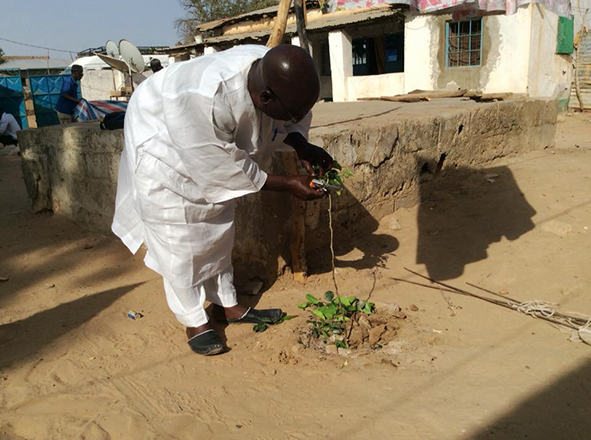
After the amazing opening event with 800 participants from 11 countries, motivation and expectations in the region are high. Therefore, it’s important to continue with the next steps in order to contribute to a sustainable development of the region. Tree plantings in selected villages – initiated by African and European Naturefriends together with local people – will stay at the focus of the activities.
2,000 fruit trees have been planted and must be taken care of. The project team of Naturefriends Senegal visited the villages before the plantings, and informed the locals about the project and necessary tree care. So far, local people participated with great commitment. By mid of April, three months have passed since the plantings took place, and the project team has visited the villages once more to look at the trees. Mamadou Mbodji was part of the team: „It was good to see, that local people take care of the trees. Where ever it was necessary, we built protection devices to keep away hungry grazing animals from the trees. And again we had intense conversation with the population: What do the trees need, when can the first fruits be harvested, how can we process and sell the fruit?” Especially the women from the villages, who traditionally are responsible for gardening, were very interested and look forward to harvesting the first fruits. For them, selling the fruits will be in important possibility to contribute to the family income.
In November, a group of German Naturefriends will visit the villages. For local people, the interest and appreciation of European Naturefriends is very valuable – and another motivating factor for taking good care of the trees.
In addition, a seminar for regional tourism stakeholders will be organized within the next months. The focus of the seminar will be on making use of the high potential of sustainable tourism for the development of the region: What is important, to make the region more attractive for tourists? How can travelers be motivated, to spend more time in the region? Which infrastructure do tourists expect – especially those ones coming from Europe? How can we involve local people in the tourism development? How many tourists can we have in our region, without excessing ecological and social limits? And –most important – how can we secure, that local people will profit from tourism? And how can we prevent conflicts, e.g. by exhausting or destroying natural resources or exploiting people working in tourism?
Furthermore, Naturefriends International will initiate a peer-to-peer project for students and young tourism stakeholders from the region and from Europe. In the framework of this project, experiences will be exchanged and specific educational material for sustainable tourism development in the region will be developed together with the participants.
Links:
Landscape of the Year 2018/2020 Senegal/The Gambia News (10)
Naturfriends go hiking in the Landscape of the Year
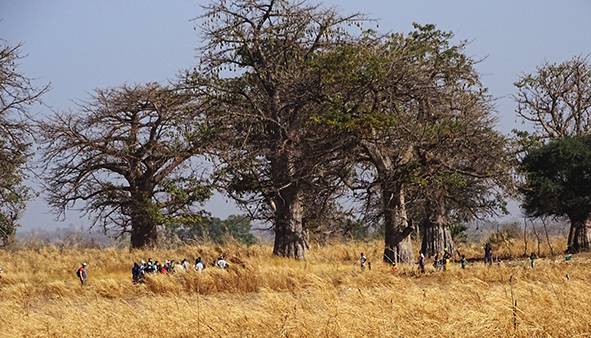
On the occasion of the "Tour d'Horizon", which was carried out very successfully in January 2018, opportunities were also explored to hike in the Landscape of the Year. Well suited for this is the Kunkilling Forest Park in The Gambia, located on the south bank of the Gambia River, about 5 km upstream from the district capital Janjanbureh.
„Forest Parks are managed forests, they are under state administration, and forestry is only possible with special permission and is regularly controlled.
In this protected area visitors can get acquainted with the rich fauna and flora of the region; the birdlife being especially interesting. The Park is accessible from four different villages, on so-called "eco-trails", permitting to explore part of the 200 hectares of protected area. The trails are each 0.5 or 1 km long, so the physical challenge is low. But in any way performance is not sought in the Park – the interest is focussed on the observation of nature. In cooperation with the Forestry Department of the region, the four villages ensure the management of the Park. During the Tour d'Horizon, only a short section of one of the trails was experienced – longer hikes are planned for further trips into the Landscape of the Year.
The Naturefriends of Koungheul (Senegal) also plan to create hiking trails in their part of the Landscape of the Year. This includes a so-called Natura Trail which starts at the village Maka Gouye. However, what is explored here is not a protected nature area, but nature in and around villages – fields, trees, orchards, plantations, etc. The path leads along a tributary of the Gambia River, so it also has special scenic attractions. And the many shrubs and trees along the way, which are important for natural medicine, are also of great interest.
This route has already been tested by the participants of the Tour d'Horizon. Ingrid Leutgeb-Born and Michael Leutgeb share their experiences from the tour on our tourism_LOG.
Links:
Landscape of the Year 2018/2020 – Senegal/The Gambia News (9)
Trees for the future
One of the highlights of the opening ceremony of the new Landscape of the Year was the fruit tree planting in three villages, done by African and European Naturefriends together with the local community.
In the dry Sahel region trees are essential for survival – especially fruit trees are important: They provide shade, they prevent erosion, create a healthy food supply, which can also be sold, and every tree is important for climate protection. So that the trees can grow they need to be watered at least three times a day and the leaves of each tree need to be protected so they are not eaten by goats or other animals. Naturefriends want to plant more than 2.000 trees together with the local community.Before each tree planting, extensive talks and a training on how to take care of the trees need to happen, to get the whole community on board in order to keep the trees alive.
The tree plantings are financed through the Naturefriends Climate Fund. Since 2017 all Naturefriends can compensate their greenhouse gas emissions from air and car travel and support climate protection projects for Naturefriends Africa and make their personal contribution for more climate justice. 100% of the payments are used to support specific projects which either focus on climate mitigation or climate protection. More information regarding the Climate Fund, how to submit payments and about the tree plantings happening within the Landscape of the Year, can be found on the Climate Fund website.
Links:
Landscape of the Year 2018/2020 – Senegal/The Gambia News (8)
From „Landscape of the Year“ to „Landscape of the Year“
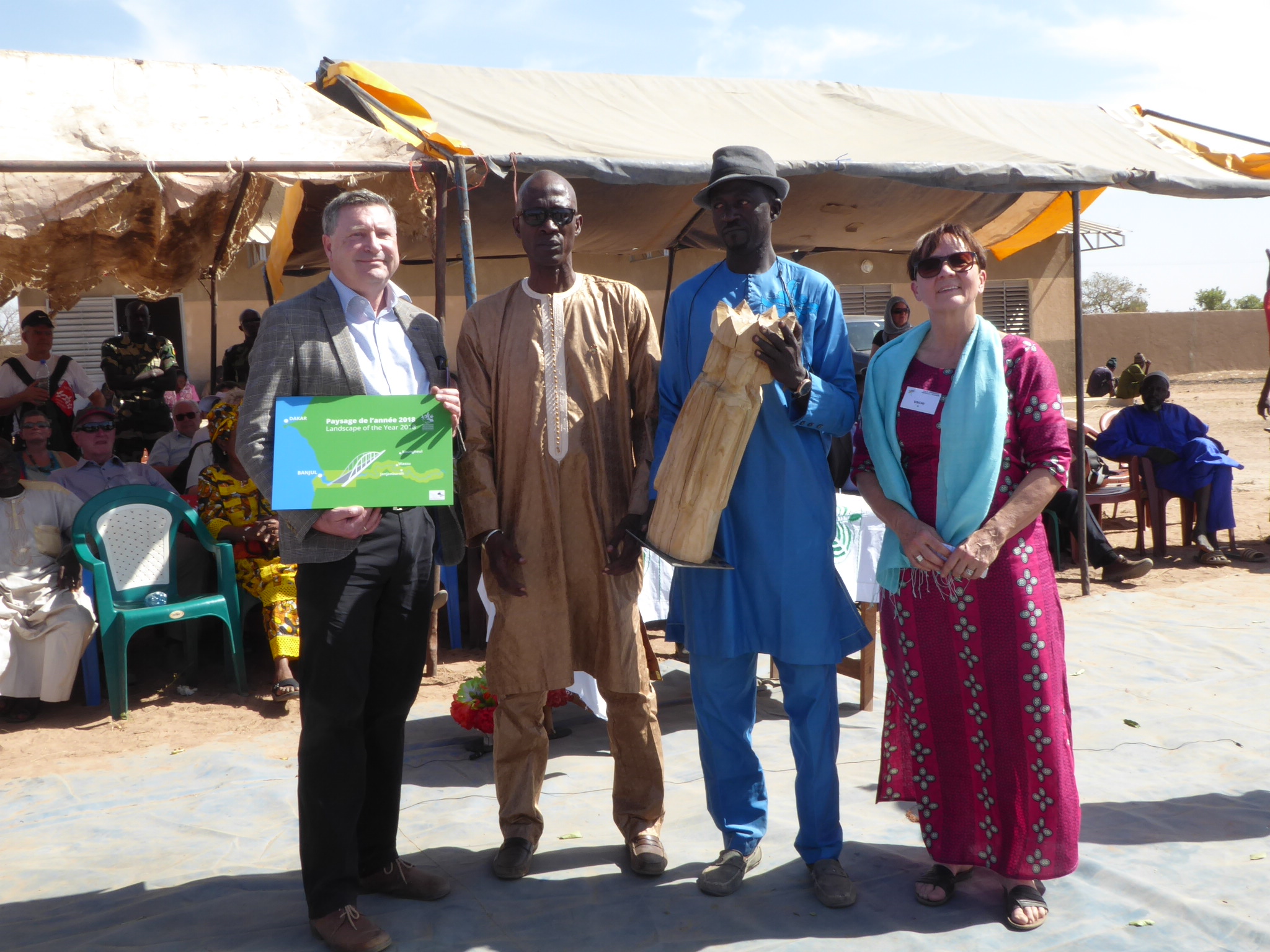
Since 1989 NFI declares a border region which is environmentally valuable to be the “Landscape of the Year”. Now a big step has been taken and the Landscape of the Year moved from Europe to Africa for the first time. For the opening festivities, a delegation from the previous Landscape of the Year (2013/14 – Upper Rhine Valley) brought gifts – to show the solidarity to the new Landscape of the Year and to encourage the people in charge. Landscape of the Years are always cross-border, rivers always play an important role – often as the border – and the bridge is an important symbol. Also this time.
Uschi Böss-Walter und Roland Walter from Naturefriends Rastatt gave Cheikh Diakhaté, President of Naturefriends Koungheul, a plaque showing a picture of a bridge across the Gambia River, as well as a statue which symbolizes the connection between the three countries of the Landscape of the Year Upper Rhine Valley and the two countries of the Landscape of the Year Senegal/The Gambia.
Please find below the speech:
"Dear friends, Ladies and Gentlemen,
We are bringing to you the greetings of the previous Landscape of the Year. It is situated at the Upper Rhine and it is forming the frontier between Switzerland, France and Germany, so to say: In the heart of Europe.
The sculpture is made from a piece of cherry wood which has been floated in the Rhine. It is showing several figures unified by a common crown. Take this as symbol for the three countries of the previous and the two countries of the actual Landscape of the Year.
The dominant element of the previous Landscape of the Year is the river Rhine, to overcome the frontier between our countries there are many bridges over the river. They all have the simple function to get from one side to the other. But as well they have the symbolic function to link the people of the three countries.
So the landscape of the year 2018 is also creating a link between two countries. This should be symbolized by this plaque. We are taking the project of the real, physical bridge over the Gambia River as a strong symbol for the development of both countries and a link between the people of The Gambia and Senegal. Bridges are important over rivers, between countries, between people and between men.
Let’s pass the baton! "
Links:
Landscape of the Year 2018/2020 – Senegal/The Gambia News (7)
A Landscape of the Year that will move you!
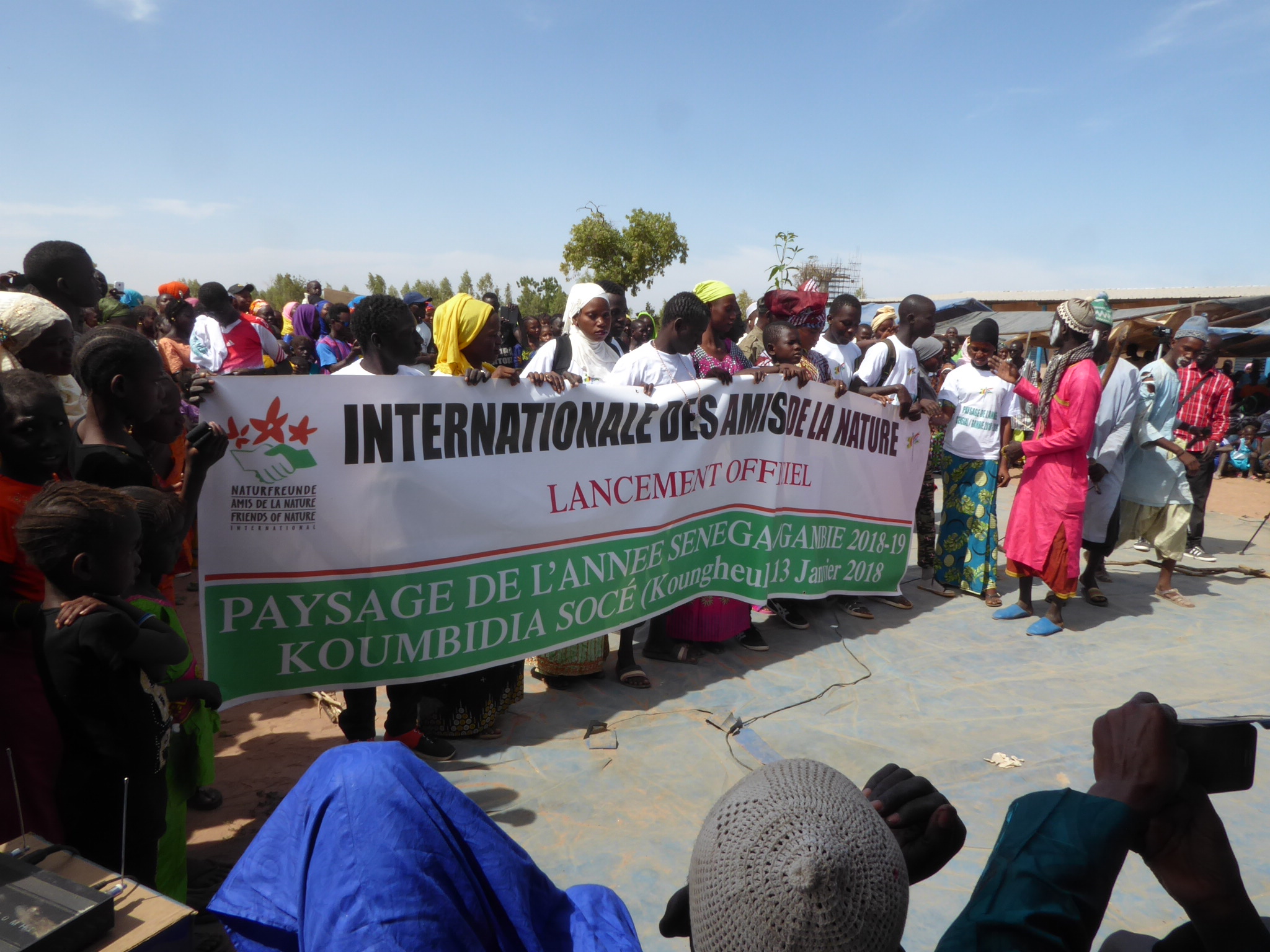
Manfred Pils, President of Naturefriends International, took part in the opening ceremonies of the Landscape of the Year Senegal/The Gambia. Here is what he experienced:
A fantastic opening ceremony
On January 13, 2018 more than 800 people in colourful clothes came together in Koumbidja Socé, about 300 kilometres from the Senegalese-Gambian border. Every group wore traditional masks and showed traditional dances to honour the guests. Speeches accompanied the dances. This was the fantastic opening ceremony of the Landscape of the Year 2018/19 – Senegal/the Gambia.
The chosen motto “Living climate justice” was printed in English and French on T-shirts worn by our hosts from Senegal. A memorial stone can be found in remembrance of the opening of the first African Landscape of the Year, the first one outside of Europe. In addition, many, many fruit trees, which were planted after the festivities by both African and European Naturefriends together with the local community, will serve as reminders as well.
Village tourism and developing the civil society
We had similar experiences in the Gambia, where also 800 people came to the Kankurang festival in Janjanbureh. The masks and their meaning were now easier to understand, especially since there is a museum about the culture behind the masks right next to the fairgrounds. After the regime change last year, the Gambia is on its way towards democracy. The civil society is just starting to develop – so it was not easy to find partners for the Landscape of the Year. Thus, the large crowd at the festival was even more special. One of the priorities within the Landscape of the Year is the development of community based tourism – a tourism which creates income for the local people. This country should be able to achieve this: The Gambia River is a big lifeline with many nature reserves where wildlife such as chimpanzees, crocodiles or hippos can be found.
Ambassadors for the Landscape of the Year
Parallel to the start of the Landscape of the Year, the international Naturefriends holiday “Tour d’Horizon” took place – accompanied by Ingeborg Pint and Senegalese Naturefriends. 40 Naturefriends from nine countries took part and also helped with the tree planting. 40 Naturefriends, who are now ambassadors for the Landscape of the Year Senegal/the Gambia. They will hopefully be an inspiration for many more to visit this area, to support solidary activities in their local groups or to contribute to the Climate Fund in order to make further tree plantings and other climate protection projects in Africa possible. .
We are have been changed and will be the change …
This landscape has changed us: The bright-eyed children, the excitement visible in people’s faces, the passion of everyone involved and the smart art of improvisation, needed for survival. Mamadou Mbodji, Deputy Secretary General of Naturefriends Senegal, often told me: „You have the clocks – We have the time.“ I would extend this by saying: “We have the wealth – You have the joy of life.” Having both would be great! However, not only we have been changed, but we will be the change through the Landscape of the Year: Trees for survival and climate protection, the development of the civil society in the Gambia, the development of a sustainable tourism industry … And I am sure that the Landscape of the Year will bring the Senegalese and Gambian Naturefriends many more employees and members.
Kellé!
Links:
Landscape of the Year 2018/2020 – Senegal/The Gambia News (6)
Coming soon: The first African Landscape of the Year in the border region between Senegal and the Gambia will ceremoniously be opened on January 13th, 2018!
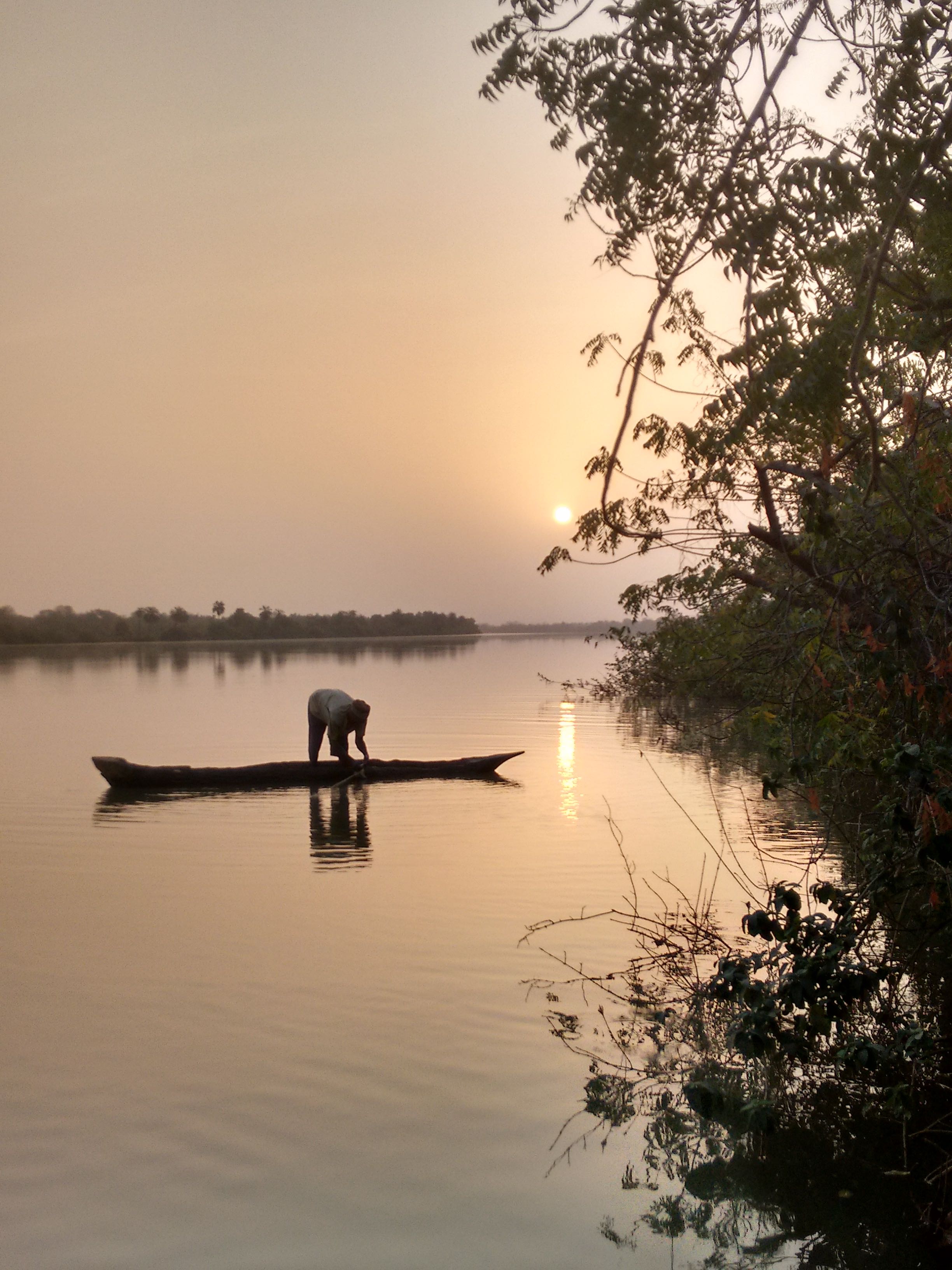
Coming soon: The first African Landscape of the Year in the border region between Senegal and the Gambia will ceremoniously be opened on January 13th, 2018! The official opening event will take place in Koumbidja Socé, at the Senegalese-Gambian border – including a varied music and arts programme, as well as activities together with the local community and a tree planting event.
The preparations on-site for the festivities are running at full steam. Special consideration is being placed on including the local stakeholders. Thus, Naturefriends Kongheul are calling for a „Comité Départemental de Dévelopement“ – like a local Council of Ministers – especially for the Landscape of the Year, in order to include local authorities and to partner with them for future activities.
For the opening festivities of the Landscape of the Year 2018/19, a group of Naturefriends from Europe will be there as well. They will partake in the “Tour d’Horizon”, organised by Naturefriends International and Naturefriends Senegal and their partners.
So that all other Naturefriends in Europe can also experience this diverse region and the local community, Naturefriends International will cover the trip on Facebook – both locals and travellers will get a chance to share stories online.
Since demand for the Tour d’Horizon is high – the trip has been fully booked for many weeks now – some member organisations are already planning additional trips to that region. More information about this and also regarding the planned activities within the Landscape of the Year will be shared in the next issues of the NFI newsletter.
Weiterführende links:
Landscape of the Year 2018/2020 – Senegal/The Gambia News (5)
Nature and biodiversity conservation in the "Landscape of the Year"
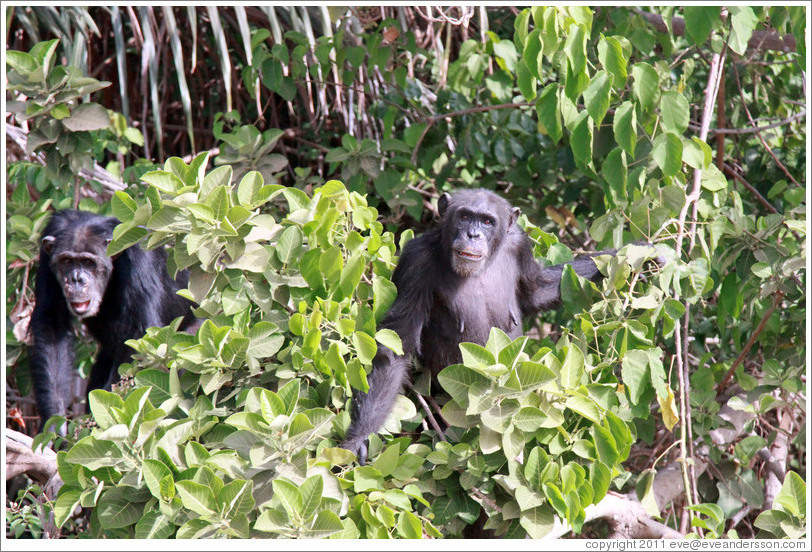
The region chosen as "Landscape of the Year 2018/2019 – Senegal/The Gambia" is located in the vicinity of Koungheul (Senegal) and Janjanbureh (The Gambia) – two cities on the border of the Sahel zone – and is marked by the impact of climate change. On the Senegalese side, the effects on vegetation and biodiversity are particularly evident. The Gambian side benefits from the Gambia River, which plays an important role in maintaining biodiversity.
This is where the River Gambia National Park is situated, approximately 40 km southwest of Janjanbureh. It covers an area of 580 km2 and is an important biodiversity reserve. It is also known as the Baboon Islands, named after the endemic Guinea baboon (Papio papio). The predominant type of vegetation is the tropical gallery forest with an impressive variety of bird species. Access to the National Park is strictly regulated. The Chimpanzee Rehabilitation Project (CRP) is a remarkable private project which is located there. Since the early 20th century there used to be hardly any chimpanzees living in the wild in The Gambia. Within the scope of CRP, this is where animals confiscated from illegal trade have been cared for since 1979, reaccustomed to a life in the wild and prepared for later release to the islands. The River Gambia National Park is characterized by an abundant avifauna and also other monkey species, hippos, warthogs and antelopes live there.
The Kunikilling Forest Park, too, is of major importance from the point of view of biodiversity conservation. It is located about 5 km from Janjanbureh in an easterly direction; it is managed under State control and is open to the public. The Park is managed by the Forestry Department in partnership with the adjacent villages. The partnership aims at promoting sustainable forest resource management. Gentle tourism programs have also been initiated, which are designed to raise awareness among visitors of the need for protection and conservation of the forest area. Visitors can watch the rich avifauna on several hiking trails and from an observation platform.
In the Senegalese part of the Landscape of the Year, the consequences of climate change, as well as of deforestation and bush fires have caused a dramatic decline of the typical forest-savannah. However, around Koungheul there are 131 hectares with four "Forêts classées". These are forests whose exploitation is regulated by the State. There is also the "Massif Communautaire de Mousdalifa", close to the border with the Gambia. Joint sensitization activities could be carried out there in the context of the Landscape of the Year, with a view to preventing bush fires and to avoid abusive deforestation. Naturefriends of Koungheul are also involved in the development of hiking trails to promote soft tourism.
Links:
- NFI tourismLOG
- Naturefriends Climatefund
- Gambia River National Park
- The Chimpanzee Rehabilitation Trust
- The Chimpanzee Rehabilitation Trust (facebook)
Landscape of the Year 2018/2020– Senegal/The Gambia News (4)
Naturefriends planting fruit trees in the Landscape of the Year
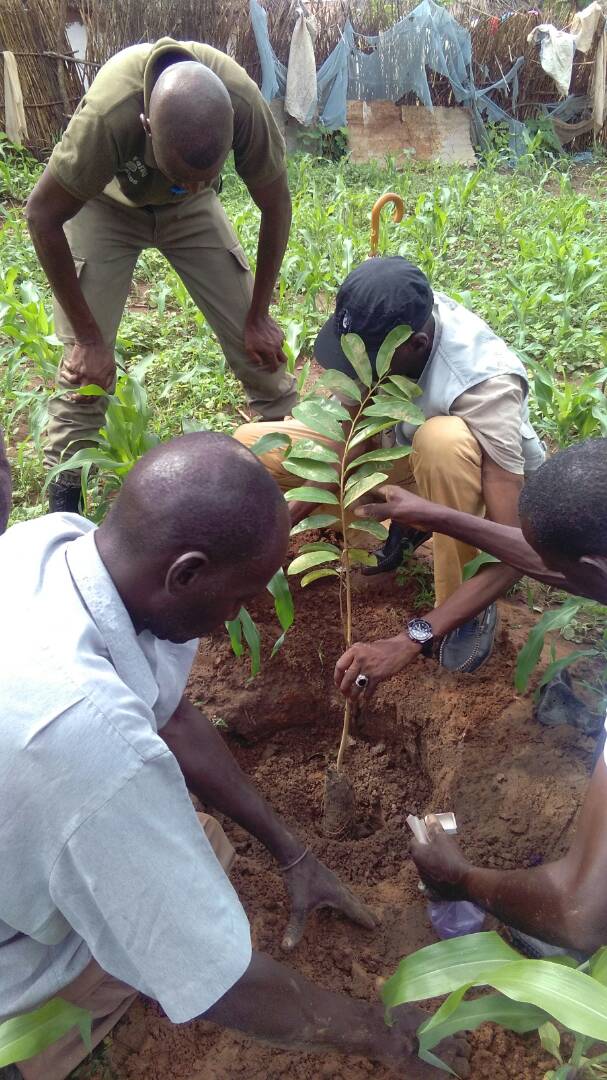
In the past a core task of Naturefriends in Africa consisted of reforestation and planting projects. This holds also true with Senegalese Naturefriends, who have been planting trees in the public space for more than 30 years with seedlings from their own tree nursery. In recent years, Senegal's agriculture has suffered massively from the effects of climate change, and the yields have declined dramatically due to lack of or irregular rainfall. Inspired by experiences in The Gambia, Senegalese Naturefriends have been re-orientating their planting activity away from public areas, towards fruit trees in the family gardens ("concessions"). Thus, the villages are being offered prospects for an increase in family income and also for increased self-sufficiency with fresh or self-processed fruits.
At present a project is being implemented with the Naturefriends local group Bodensee (“Lake Constance”, Germany), which supports village communities in several regions of Senegal in the cultivation of fruit trees. One of the selected villages for this project is Koungheul Socé in the Landscape of the Year, where the first planting campaign took place in August 2017. This village is going to be visited during the "Tour d’Horizon", the project trip to the Landscape of the Year.
Building on the activities of the Bodensee Naturefriends, a fruit tree planting action will also be carried out in a Senegalese and a Gambian village in 2018 within the context of the "Landscape of the Year", accompanied by training for the sustainable care of the family gardens. This project is funded by the Naturefriends Climate Fund.
Links:
Landscape of the Year 2018/2020 – Senegal/The Gambia News (3)
Sustainable tourism in the Landscape of the Year

The area selected as Landscape of the Year is only marginally developed for tourism. The idea behind this project – jointly organised by Naturefriends International and Senegalese Naturefriends with their partners – is to launch (Senegal) or to restore (Gambia) responsible tourism in the region, with a view to providing new or additional sources of income for the population. This is also in line with the ideas and plans of the local authorities.
There is a lot of potential for this type of tourism: Despite its barenness, the region is known for its scenic beauty with green hills, Baobab groves and the diverse fauna of the Gambia River, as for instance the Kunkilling Forest Park. Prehistoric stone circles and many traditional festivities of different ethnic groups count among the cultural highlights. Among those is the ceremony related to the Kankurang, the main character of a Mandinka initiation rite, inscribed since 2005 on UNESCO’s List of the Intangible Cultural Heritage of Humanity.
The Kankurang on YouTube:
https://www.youtube.com/watch?v=3gNtkPUuxl0 , english
https://www.youtube.com/watch?v=0Ly-uMMYMCY , french
The section “Information from the Landscape of the Year“ of NFI Newsletter is designed to present various aspects of the region on a regular basis. You find here information on Janjanbureh as potential destination for sustainable tourism:
Janjanbureh: Sustainable Tourism Development for the Destination
Janjanbureh, formerly known as Georgetown and at present capital of the Gambian Central River Region, was founded in 1832 on McCarthy Island in the Gambia River. In 1995, both the city of Georgetown and McCarthy Island were renamed Janjanbureh respectively. The island is accessed by a bridge from the south bank, and small boat ferries or a government ferry on the north bank.
Though rich with tourist visiting sites, Janjanbureh is today hardly visited by tour operators.
The island has many historic sites relating to the settlement of freed slaves and early Christian settlers who were from the Wesleyan Mission (1823) and introduced the peanut (groundnut); a crop still exported downstream on the Gambia River. The Wassu stone circles lie 22 km northwest of Lamin Koto, on the north bank across from Janjanbureh. They are inscribed in the UNESCO World Heritage List. Janjanbureh is also noted for being the site of the first church in Gambia and the first high school.
The dominant vegetation type is tropical rain forest in the form of a gallery forest, which is particularly rich in bird species. Kunkilling Forest Park is of specific interest in this context and can be explored on eco-trails. The west of the island has abundant, secluded woodland, as well as the West Rice Paddies. The island used to be a bustling town visited by tourists mainly by river transport. Currently, there is a river pirogue that takes tourists to Janjanbureh. These tourists travel through the island leaving only minimal benefits behind. Small locally owned businesses and guiding services hardly make any income from tourism.
The Landscapte of the Year initiative will help to promote Janjanbureh and its surrounding attractions as a Sustainable Tourism Destination where the numerous Naturefriends and tourists could visit to get a deeper insight and understanding of the Gambia and the realities of the people.
Links:
Landscape of the Year 2018/2020 – Senegal/The Gambia News (2)
Stakeholder meeting in Koungheul, Senegal
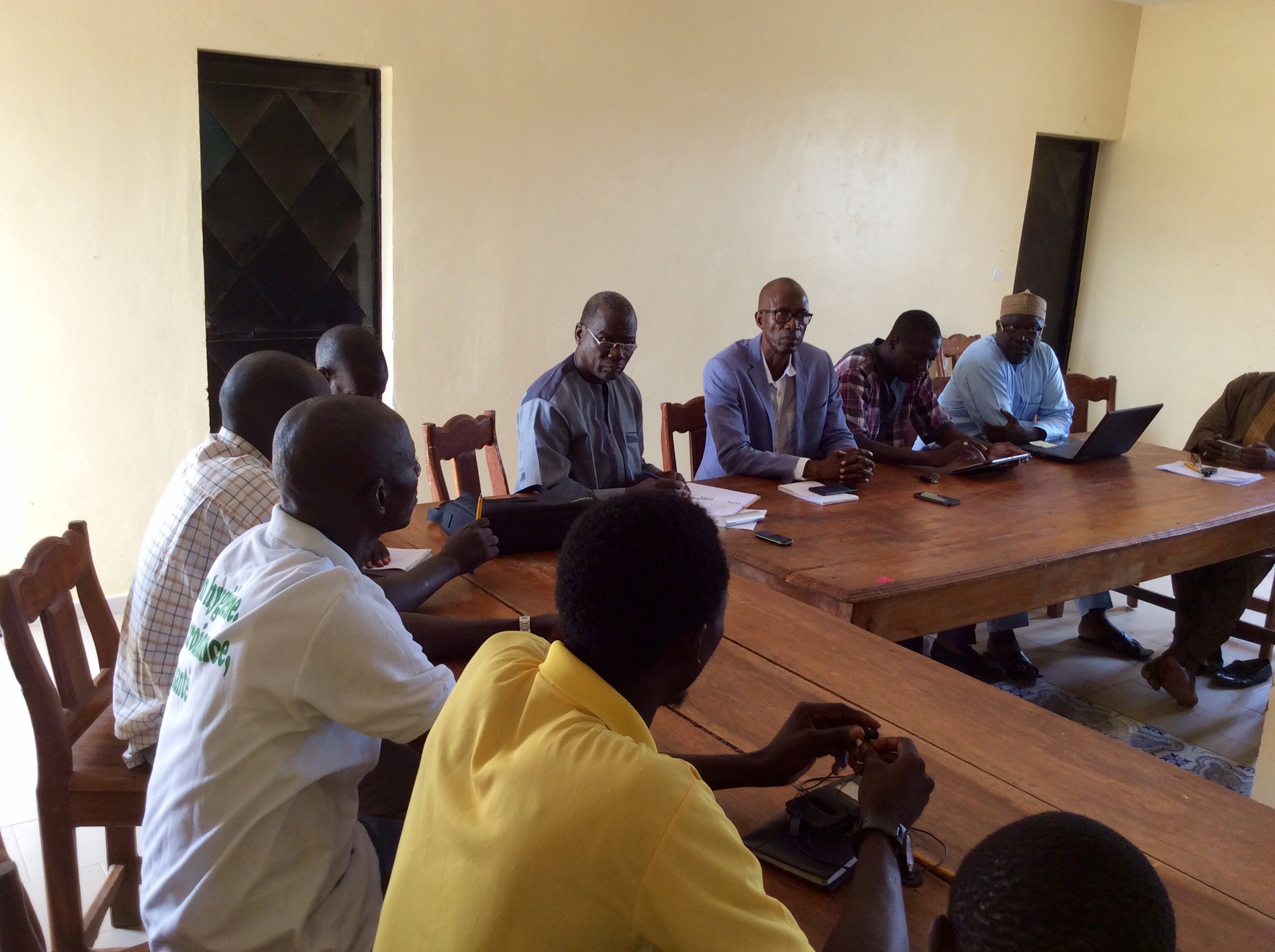
From 21 to 23 July 2017, a stakeholder workshop was held in Koungheul in preparation of the Landscape of the Year (LoY) 2018/2019 Senegal/The Gambia. The meeting was attended by about 20 participants from the villages participating, ranging from village chiefs to members of the local LoY-committee through the representative of the Ministry of the Environment, the head of the local forestry authority and the press.
The external participants were the Gambian partner, the representative of ASAN (Senegalese Naturefriends) and Mamadou Mbodji, national coordinator of the LoY, Vice-President of Naturefriends International (NFI) and President of the African Naturefriends Network RAFAN. The meeting was intended as an occasion for exchanging and sharing information about the concept of the LoY, but was also an opportunity for the local committee to acquire new skills for a more efficient work.
After the opening of the meeting by the 1st Deputy Mayor of Koungheul, who is also president of the Naturefriends of Koungheul, the National Coordinator revisited the history of Naturefriends at three levels: Senegalese, African and international. He recalled that this LoY is unique in all respects because for the first time since the launch of the project in 1989, it will be organised on behalf of Africa in the Senegalo-Gambian region and specifically in Koungheul and Janjanbureh. This is a great opportunity to strengthen the dialogue between the two countries as well as between both countries and the rest of the world.
Participants in the workshop formally committed themselves to the process of implementing this activity of the NFI seeking to highlight a cross-border region which, despite its cultural richness and the attractiveness of its biodiversity, remains heavily attacked by negative impacts of climate change.
Following in-depth and constructive discussions, an organising committee, with specialised sub-committees, was set up. It is responsible for presenting an action plan with concrete proposals that will serve as a roadmap, including the organisation of the official opening of the LoY on 13 January 2018 in Koumbidia Socé. The chief of the village, after expressing his pride in hosting such an event, promised to spare no effort for a successful organization.
Links:
Landscape of the Year 2018/2020 – Senegal/The Gambia News (1)
Agreement on Forest Resources and Wildlife Management between Senegal and the Gambia
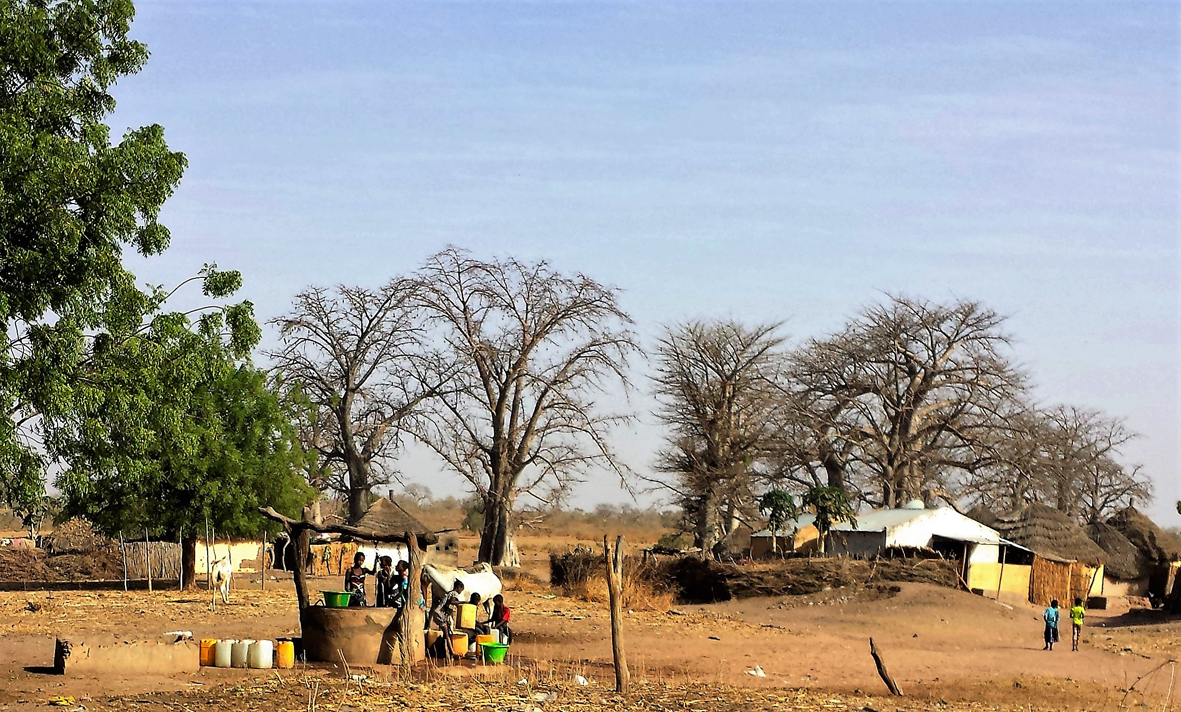
Due to the successful political changes in the Gambia, conditions for the cooperation between Senegalese Naturefriends and their partners across the border improved tremendously. Extensive woodlands in the border regions of the two countries have suffered strongly because of illegal deforestation and overuse. Now, both countries had their Ministries for the Environment sign a cooperation agreement in April 2017 regarding the responsible use of forest resources close to the border.
According to the agreement joint programmes and strategies shall be developed and implemented, which includes a participatory approach to include the local communities. This is fully in line with the interests of local Naturefriends, who now have the chance to be the first in the region to start new developments and/or be part of such changes.
Both the Senegalese and the Gambian press have covered the agreement extensively:
http://allafrica.com/stories/201705120936.html , english
Links: